The document serves as an introduction to Python, detailing its history, general-purpose nature, and primary features that make it a favorable programming language. It covers various Python versions, installation instructions, data types, control structures, functions, and built-in libraries, providing examples for clarity. Additionally, it explains variables, control flow, and common operations, making it a comprehensive guide for beginners learning Python programming.
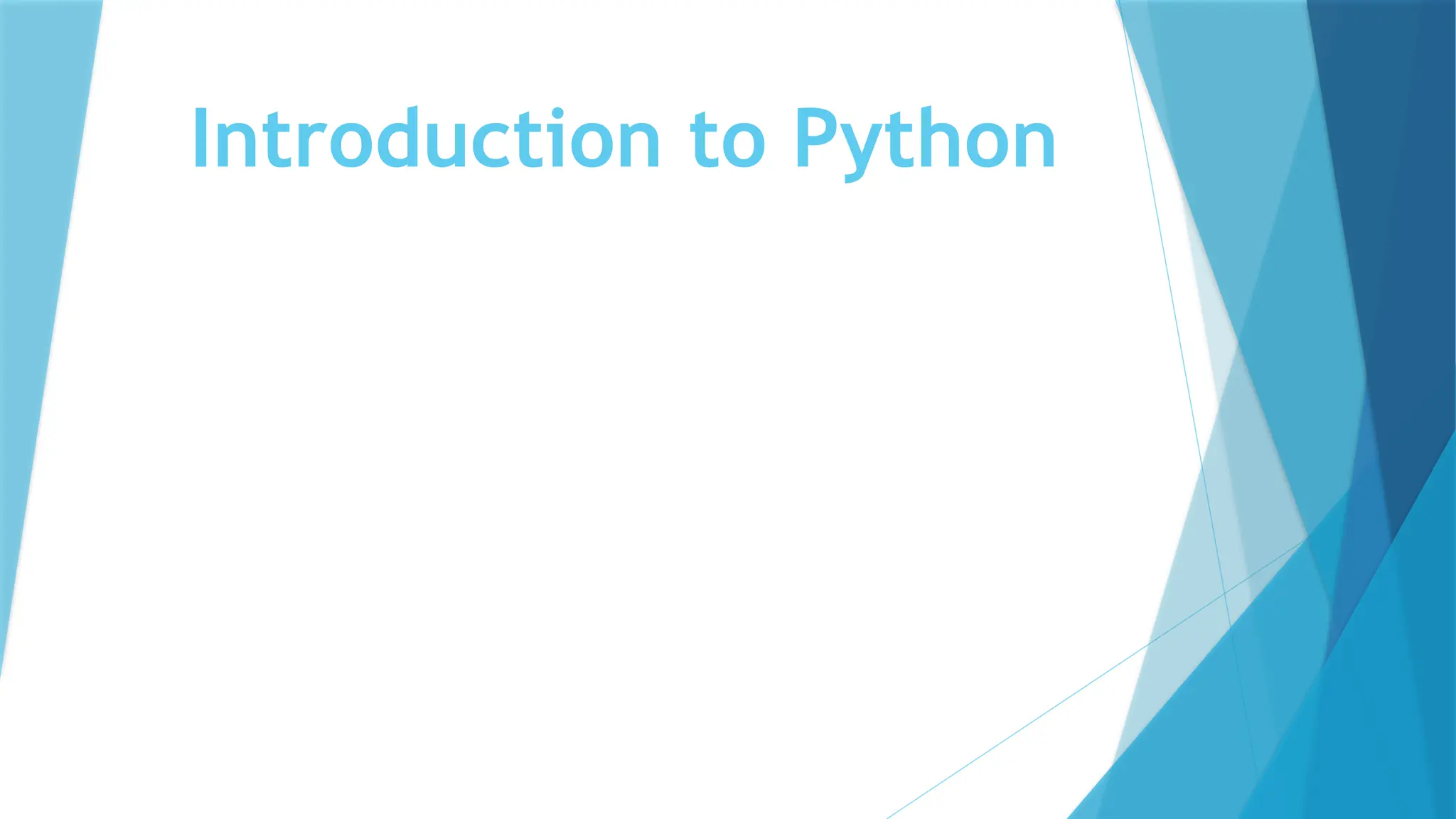

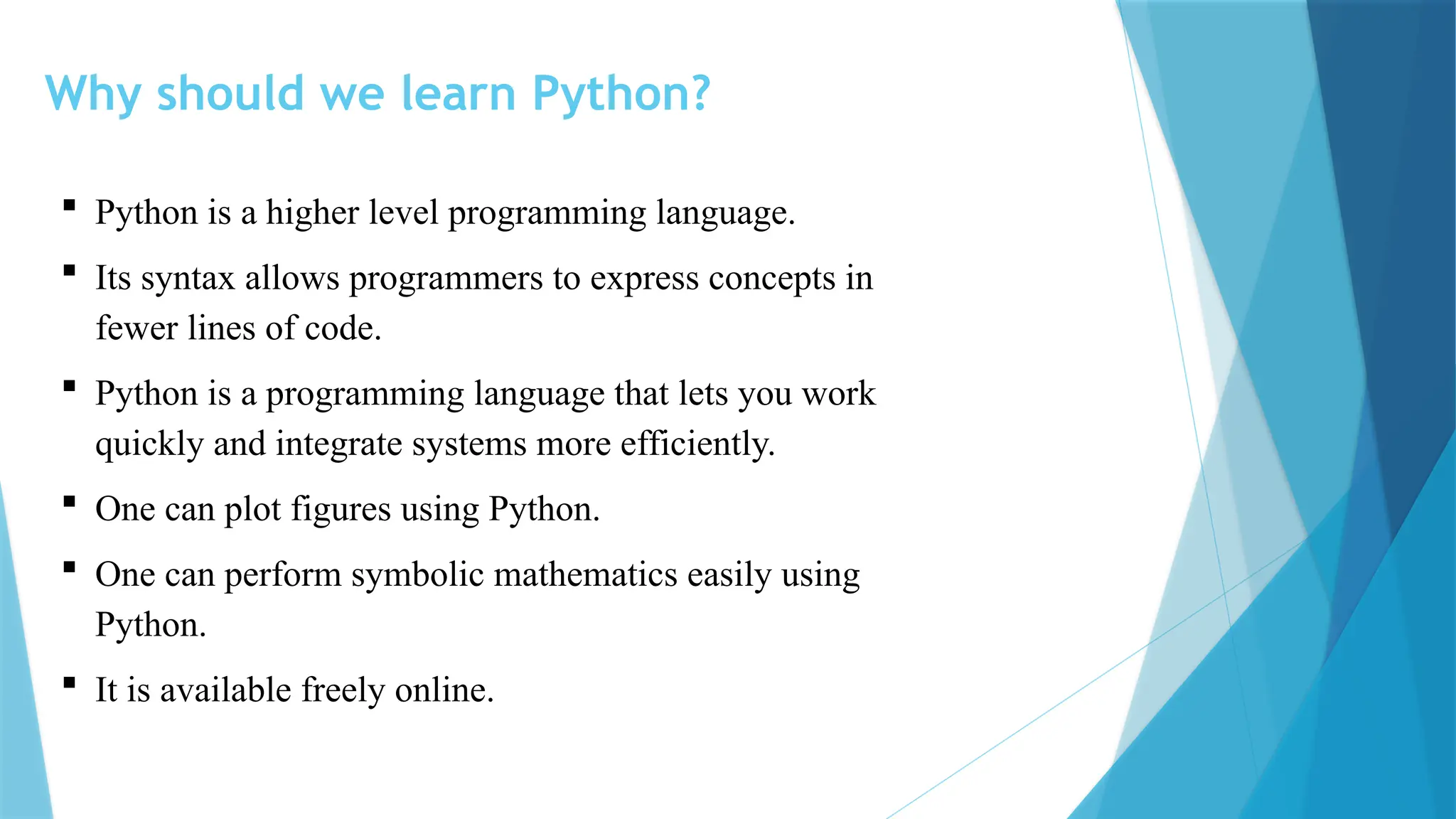
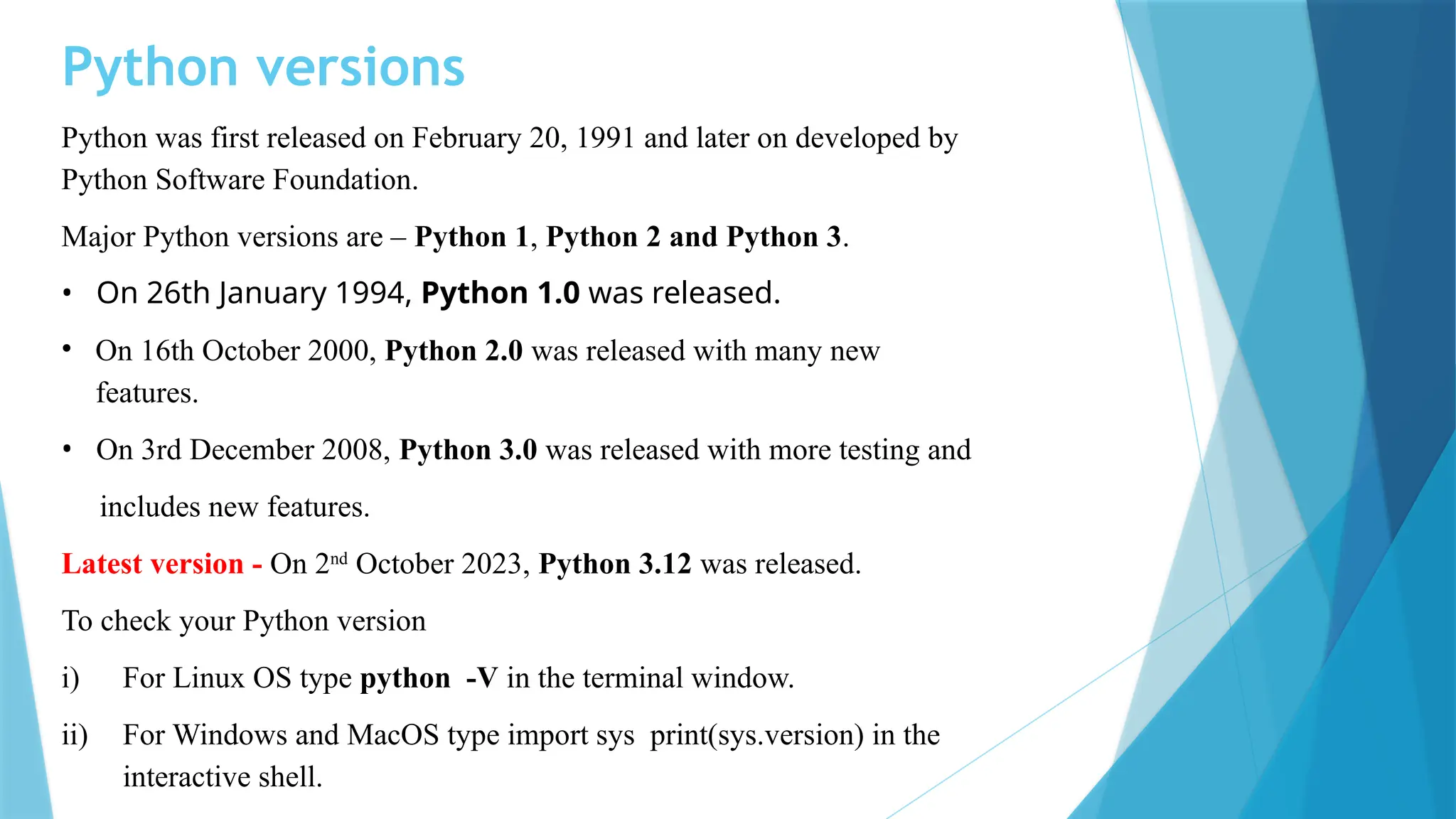
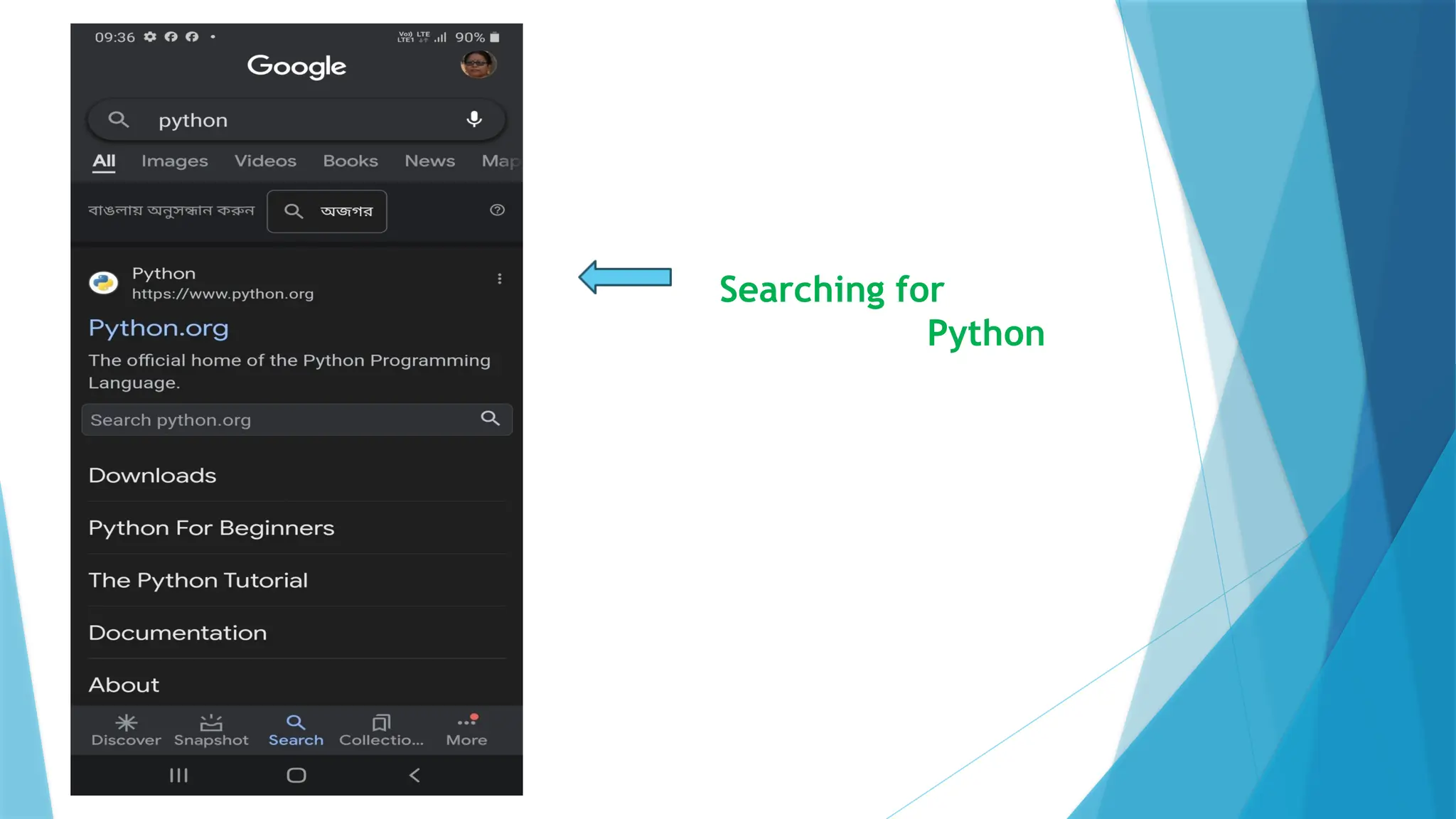
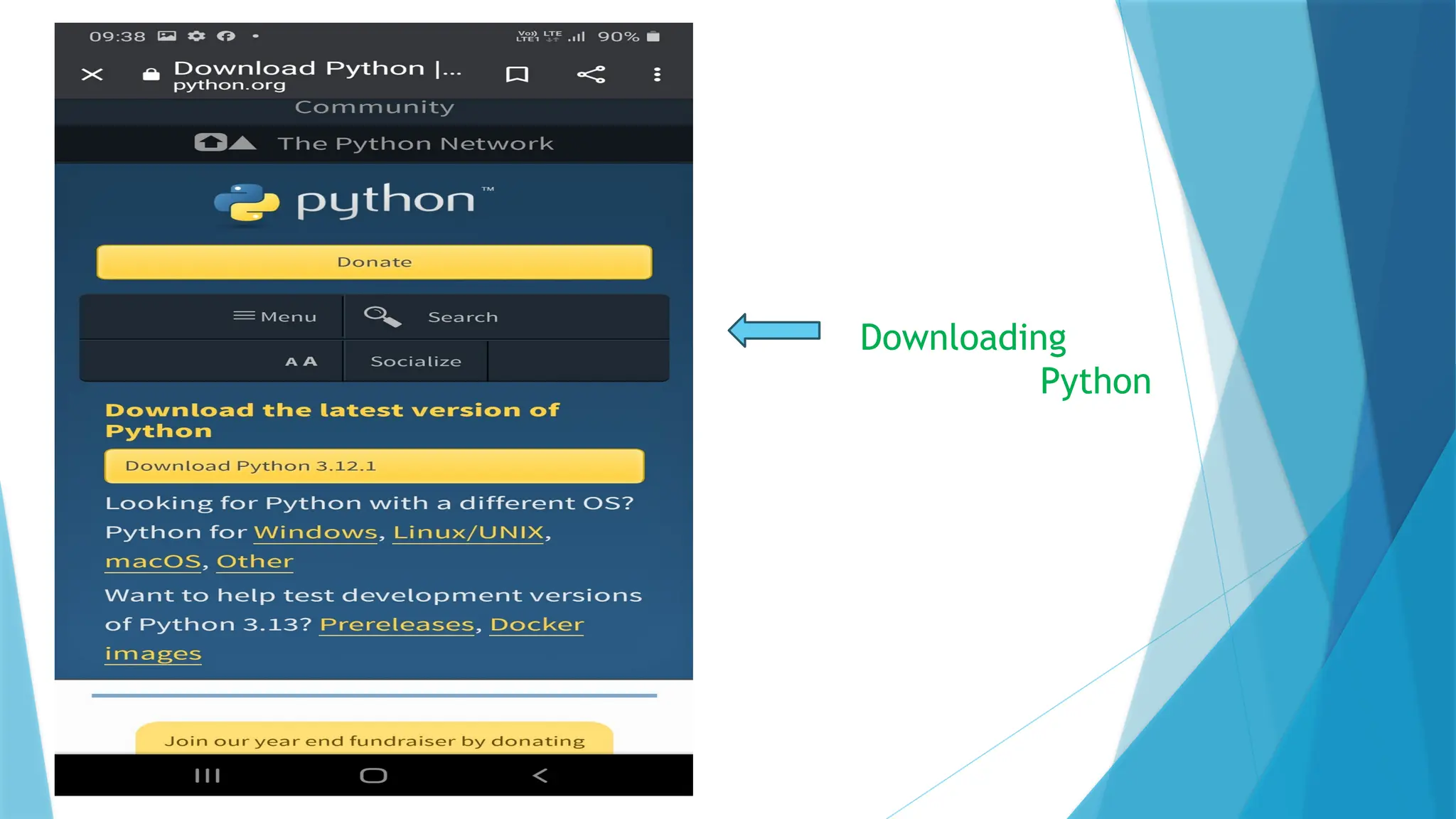
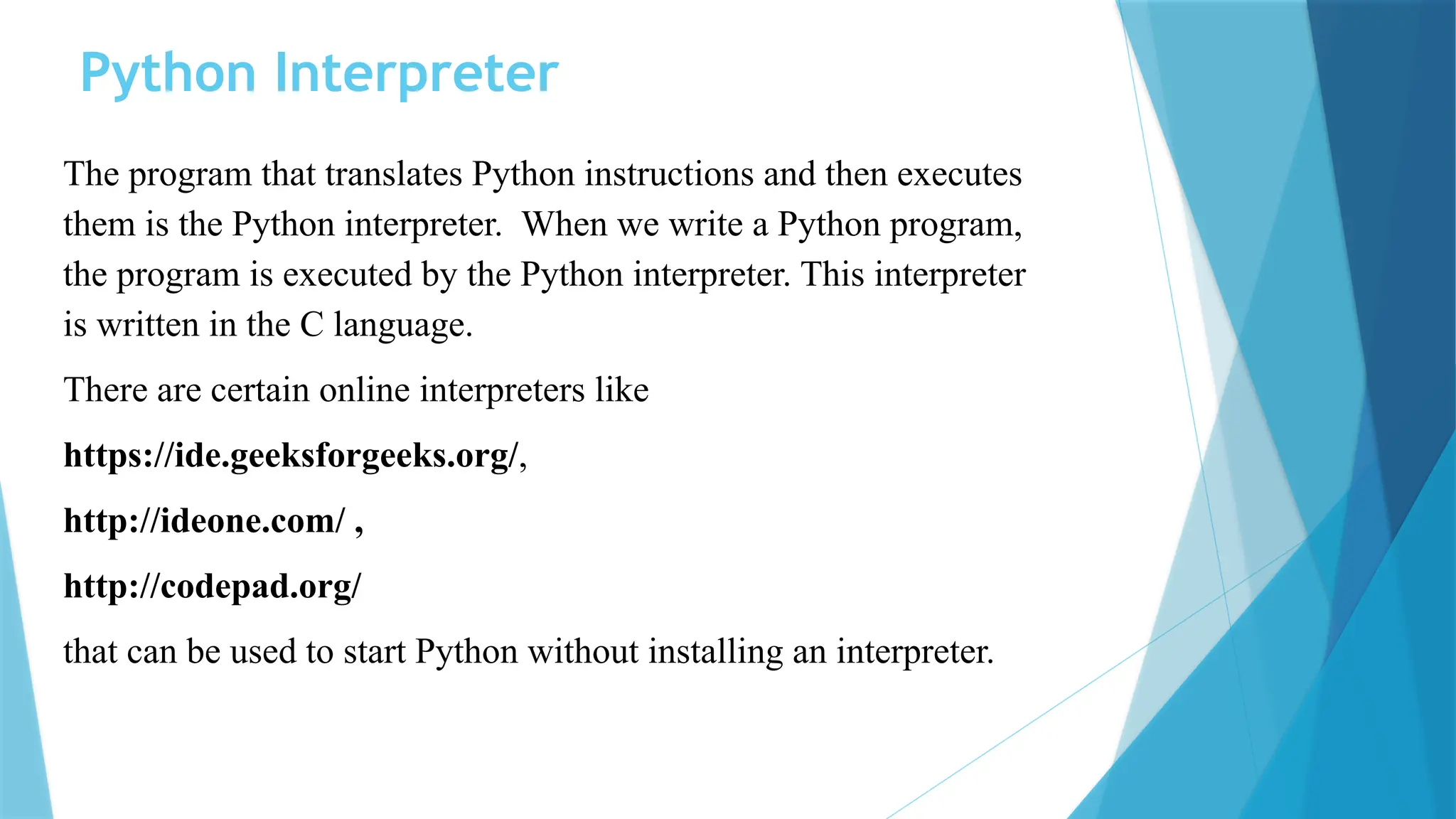
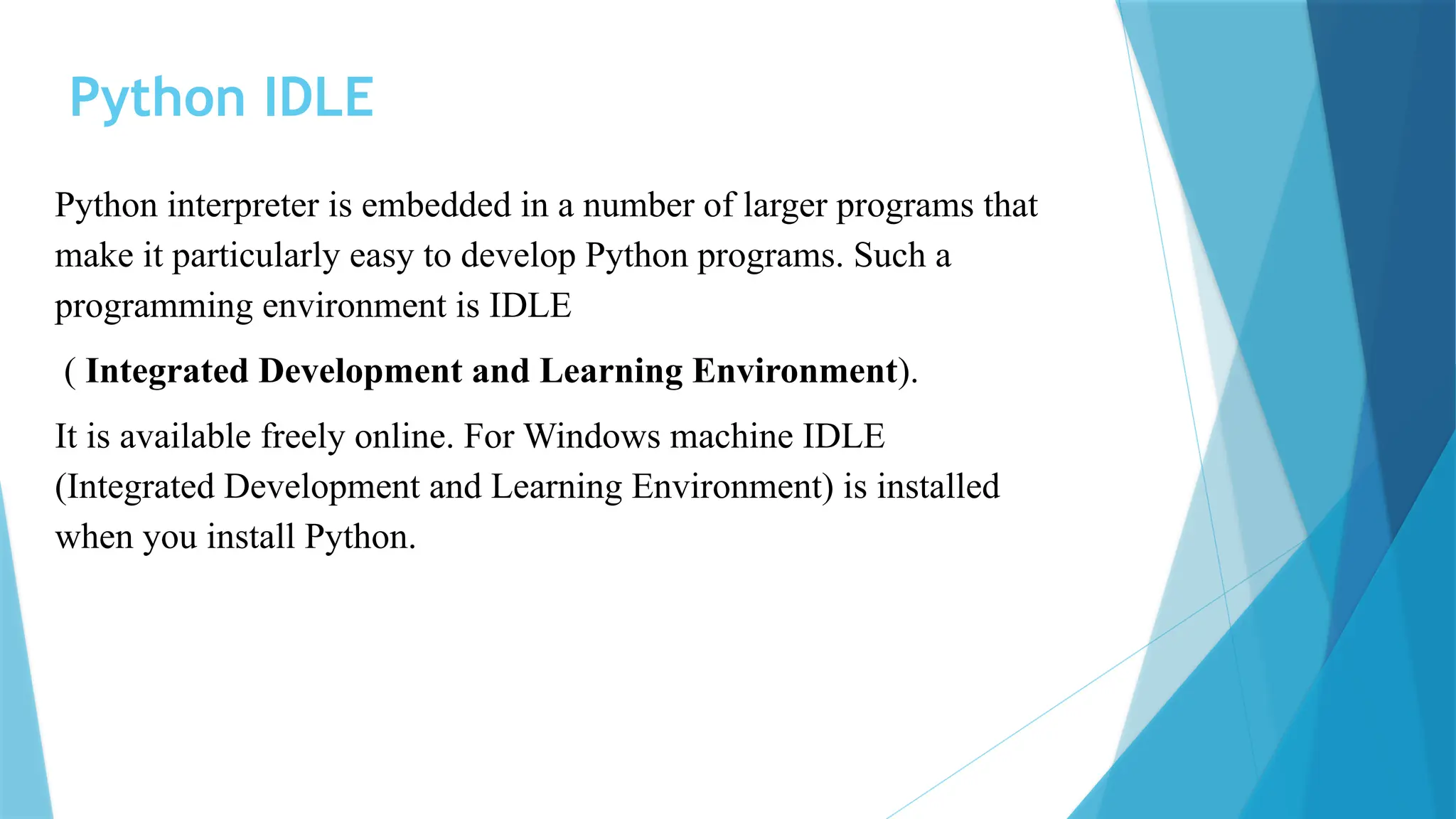
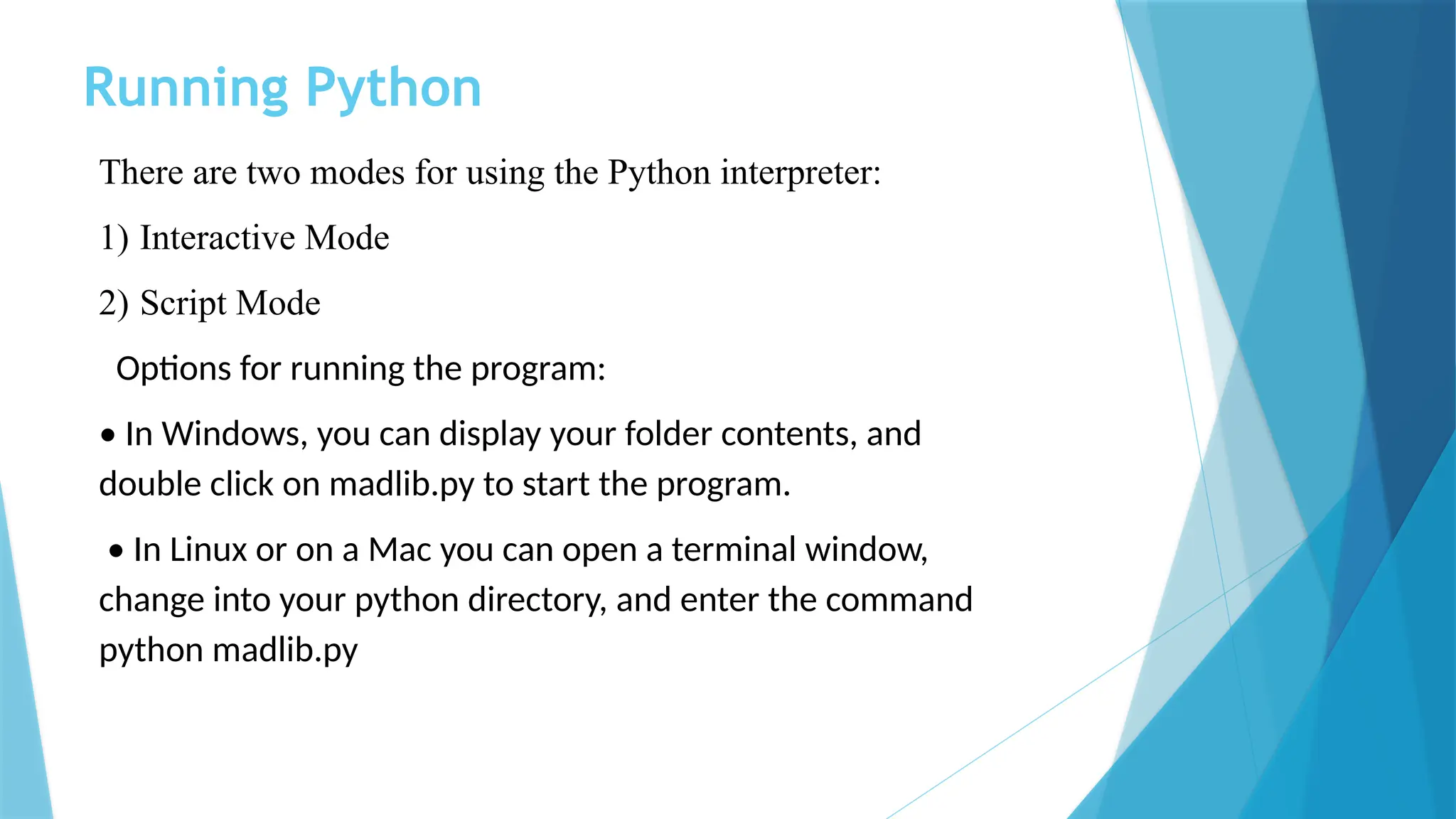
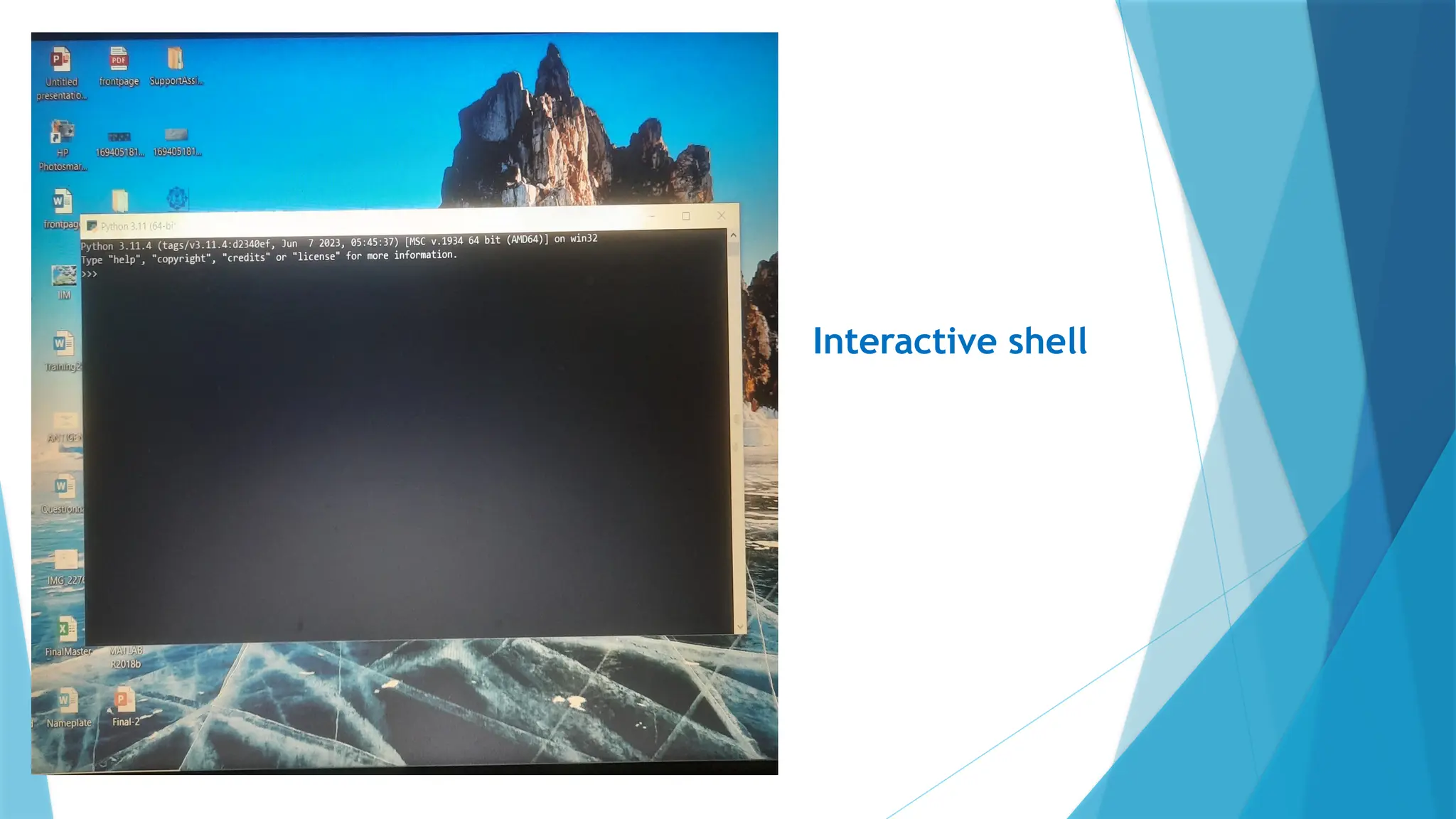
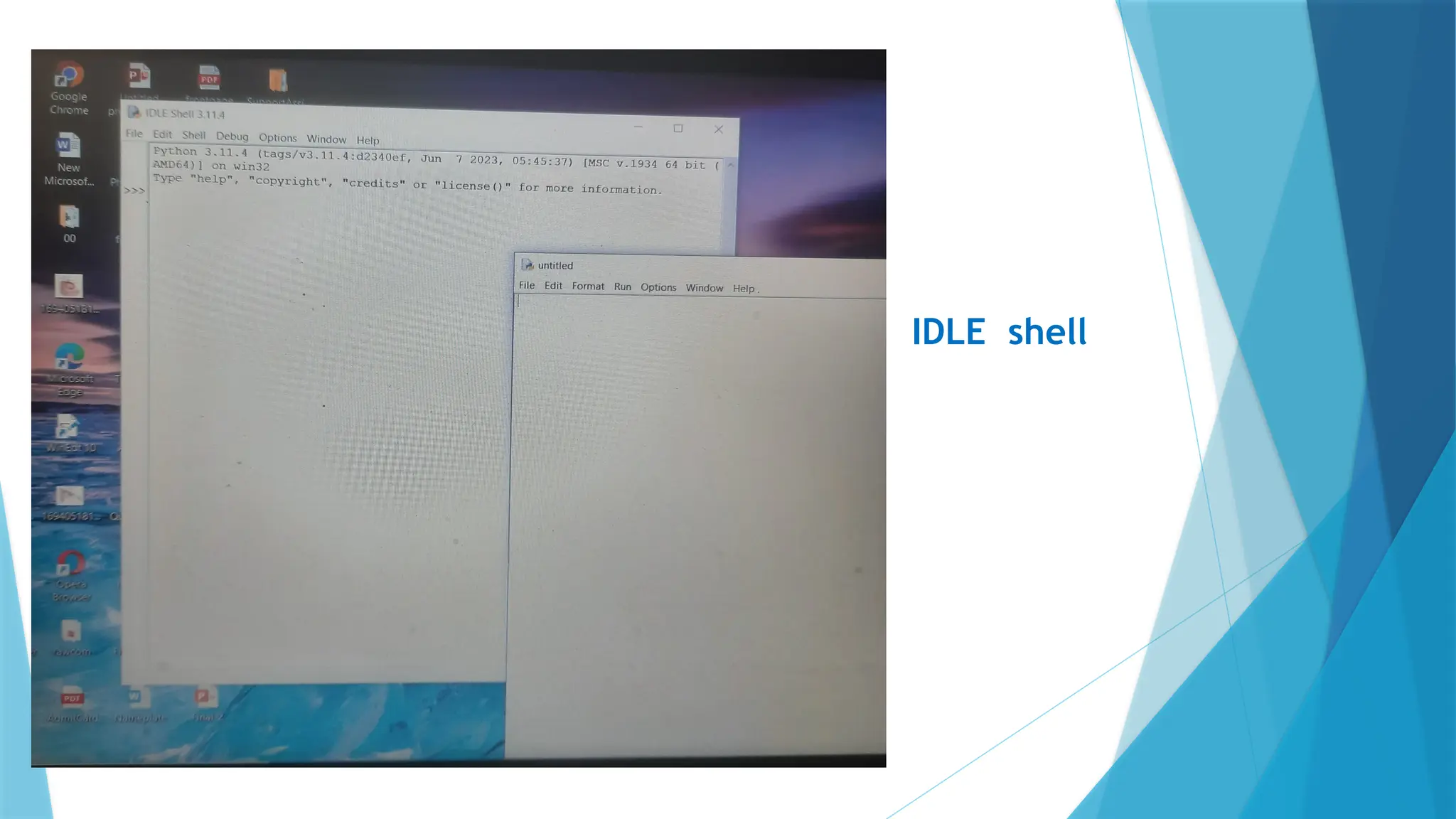
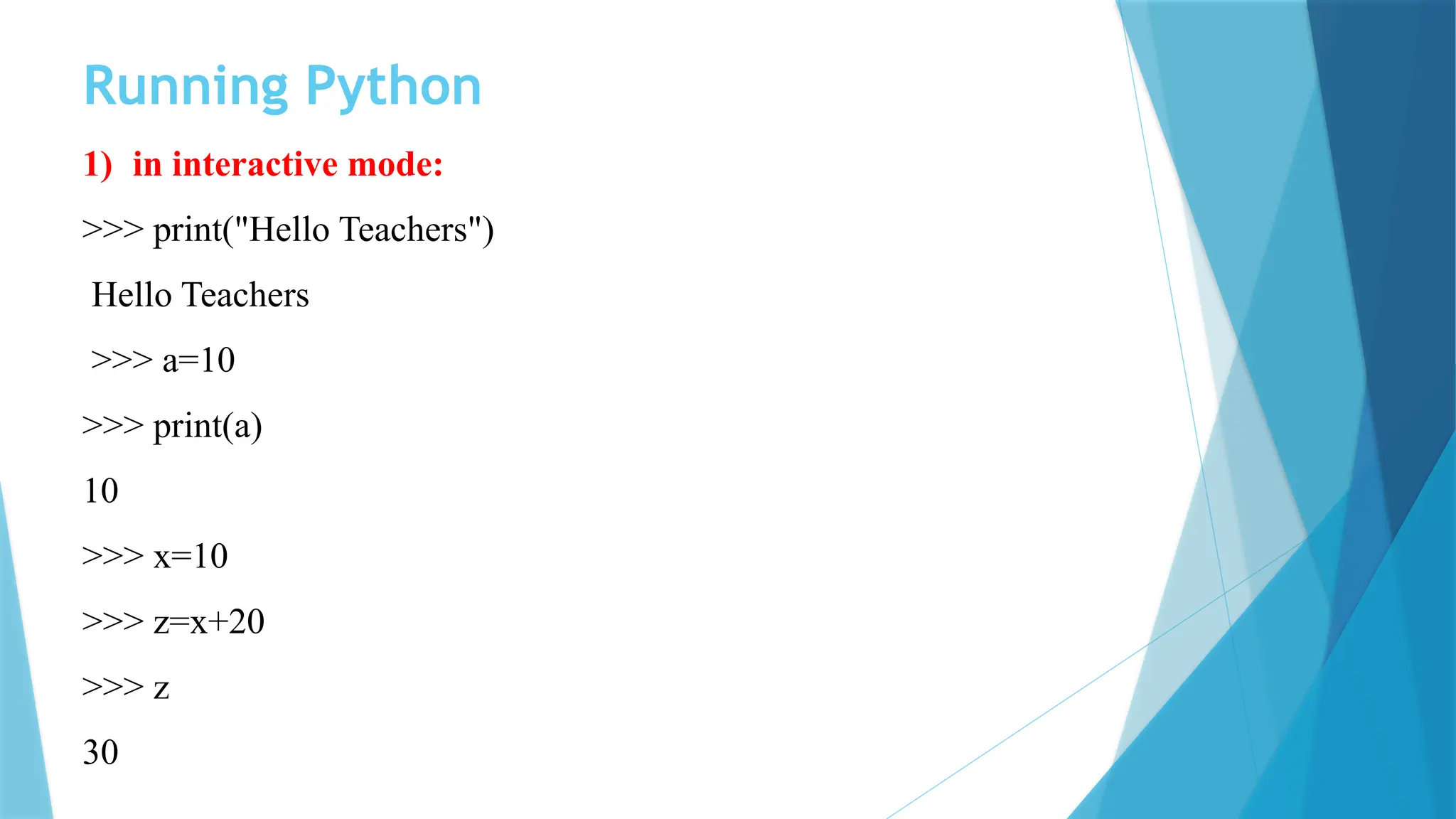
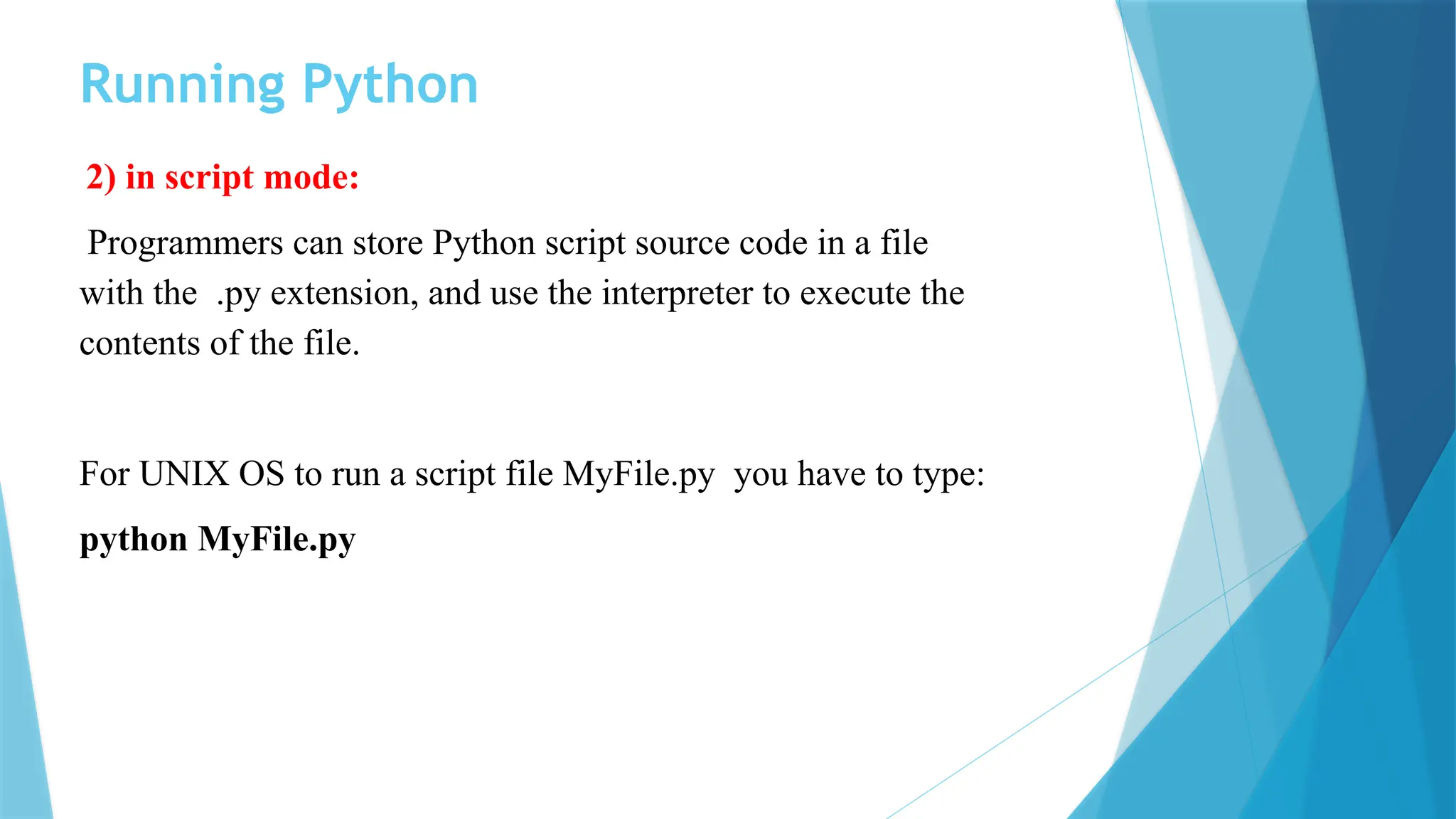
![Data Types Python has various standard data types: Integer [ class ‘int’ ] Float [ class ‘float’ ] Boolean [ class ‘bool’ ] String [ class ‘str’ ]](https://image.slidesharecdn.com/chapter1-241210042623-557047d6/75/Chapter1-python-introduction-syntax-general-14-2048.jpg)
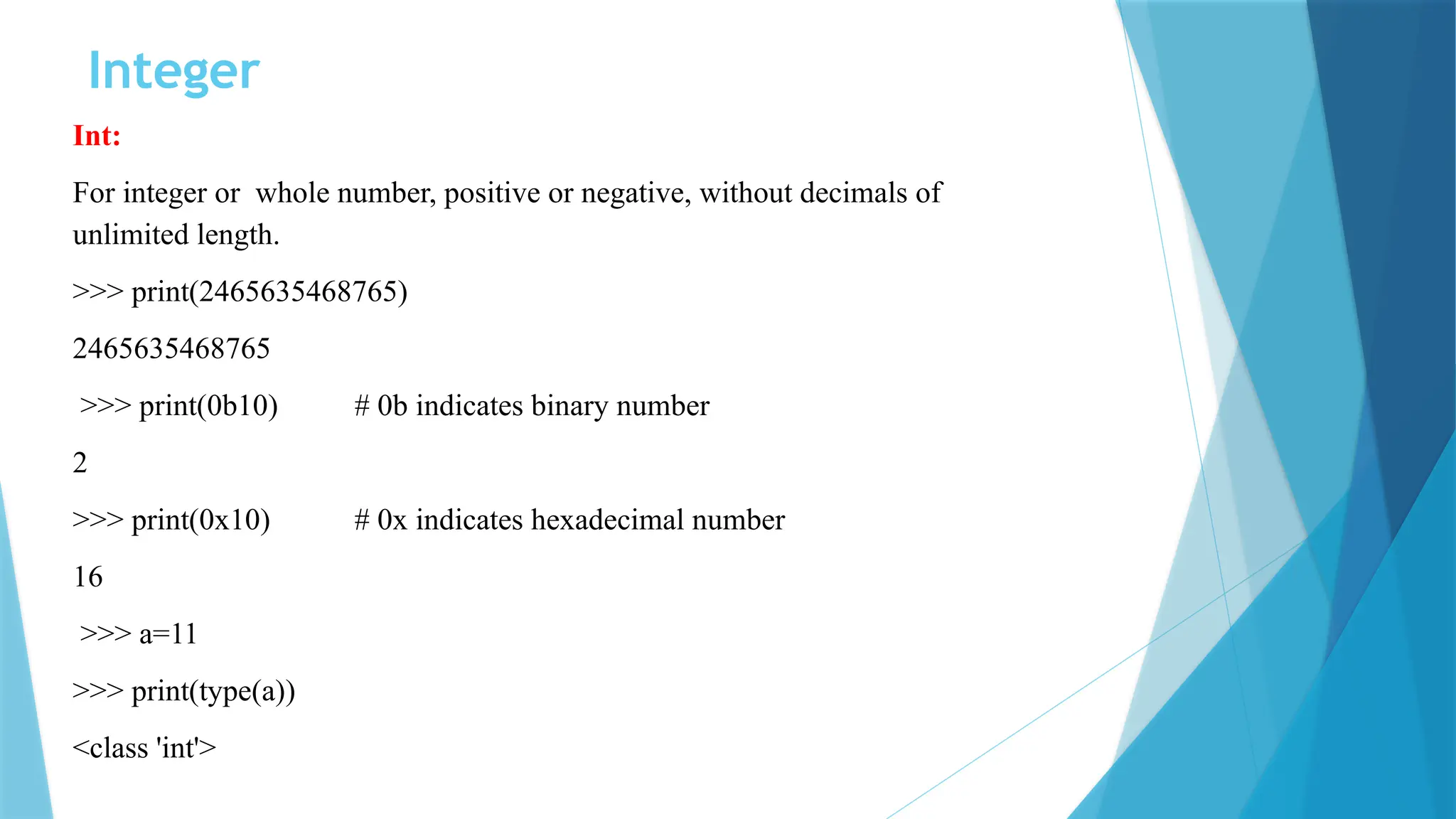
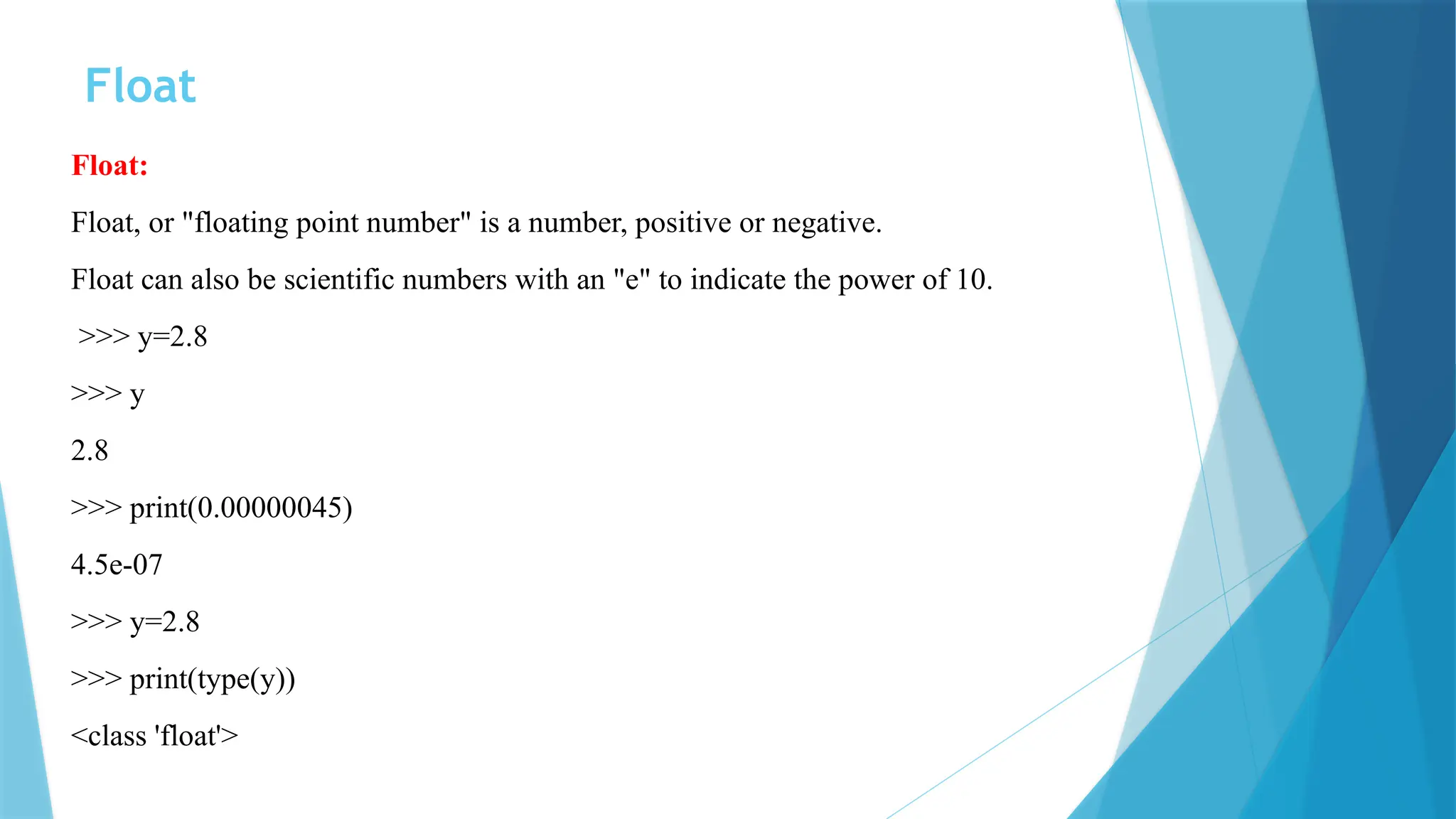
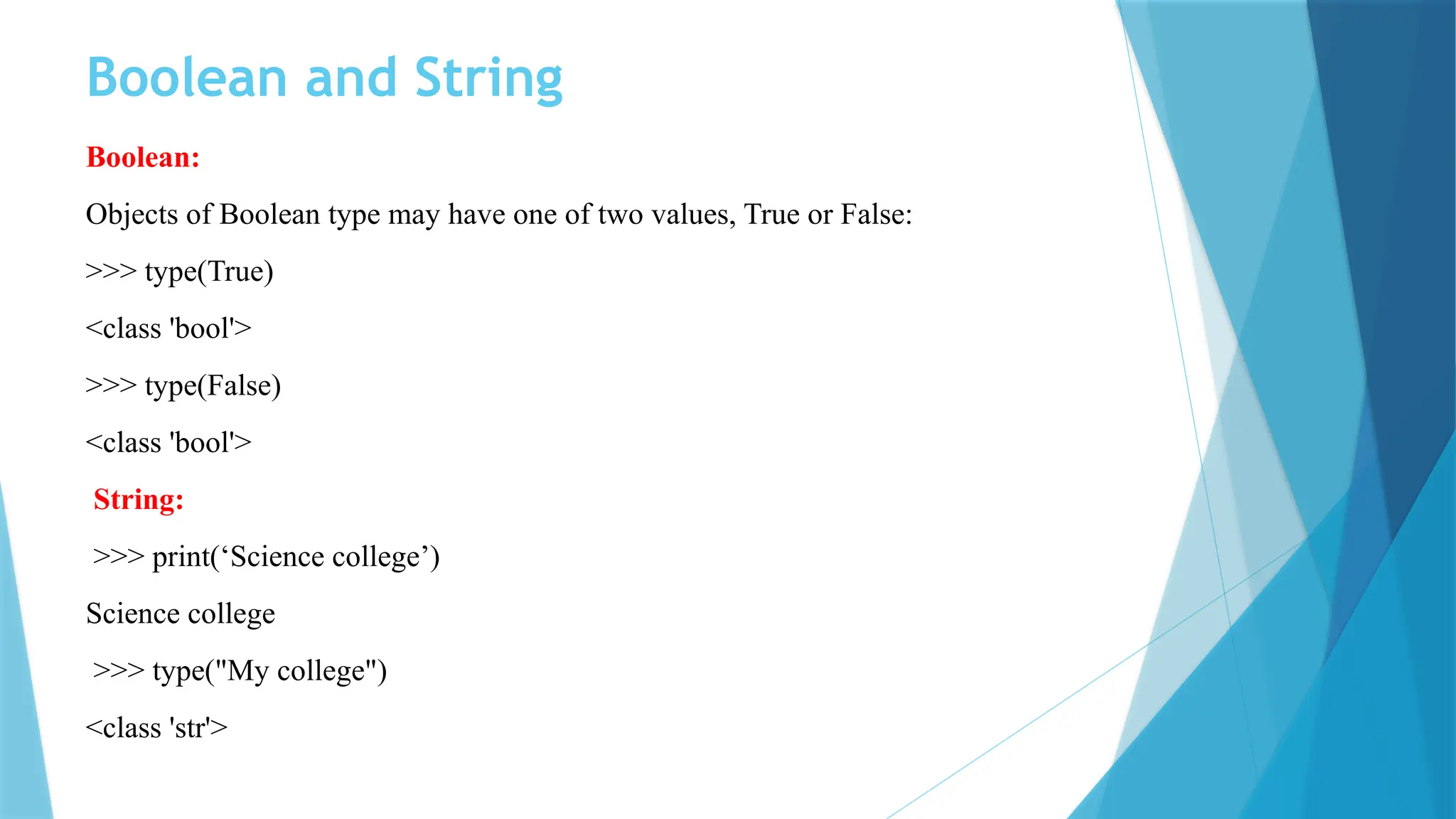
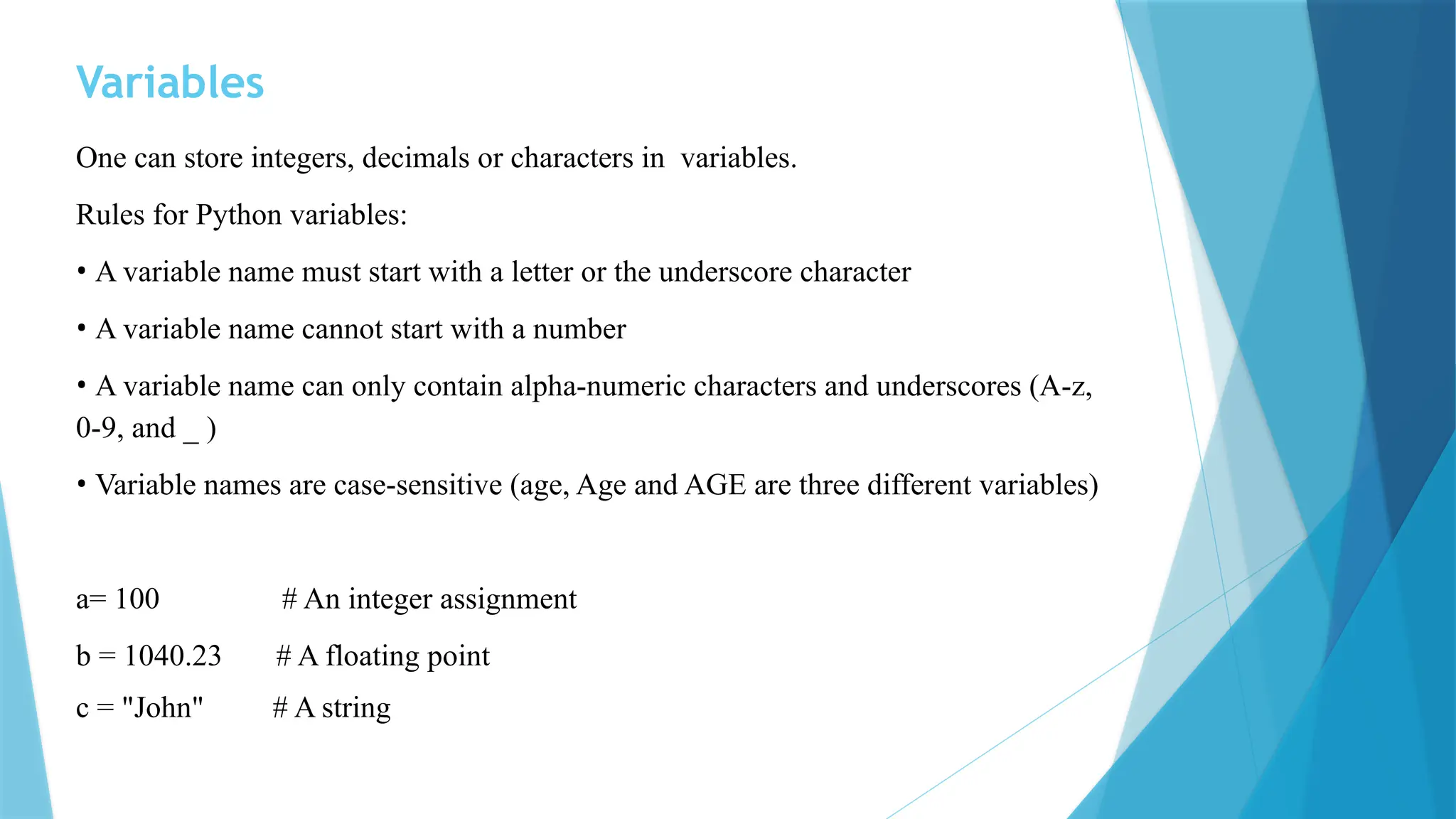

![List, Tuple, Set, Dictionary Four built-in data structures in Python:- list, tuple, set, dictionary - each having qualities and usage different from the other three. List is a collection of items that is written with square brackets. It is mutable, ordered and allows duplicate members. Example: list = [1,2,3,'A','B',7,8,[10,11]] Tuple is a collection of objects that is written with first brackets. It is immutable. Example: tuple = (2, 1, 10, 4, 7) Set is a collection of elements that is written with curly brackets. It is unindexed and unordered. Example: S = {x for x in 'abracadabra' if x not in 'abc'} Dictionary is a collection which is ordered, changeable and does not allow duplicates. It is written with curly brackets and objects are stored in key: value format. Example: X = {1:’A’, 2:’B’, 3:’c’}](https://image.slidesharecdn.com/chapter1-241210042623-557047d6/75/Chapter1-python-introduction-syntax-general-20-2048.jpg)
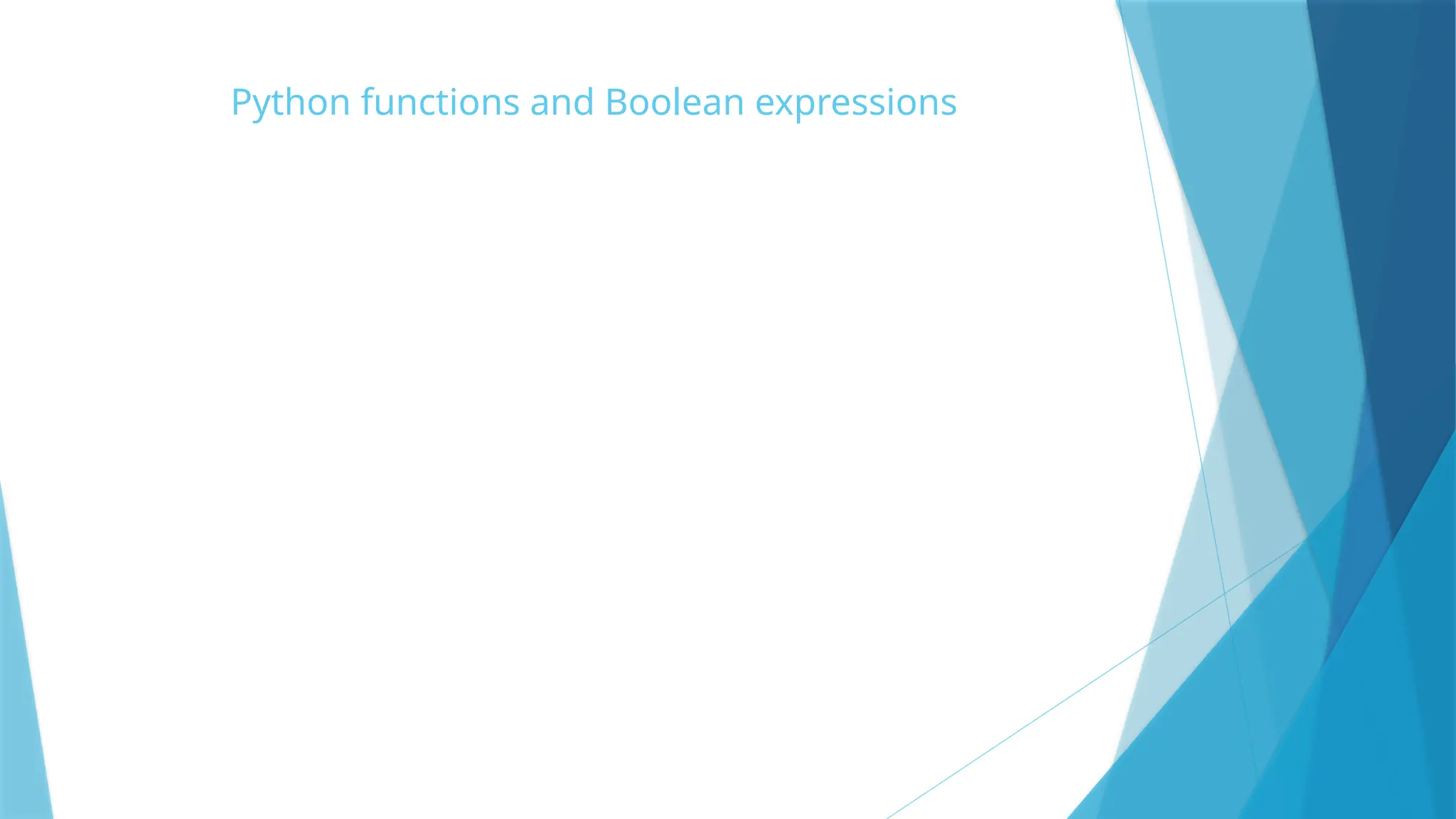
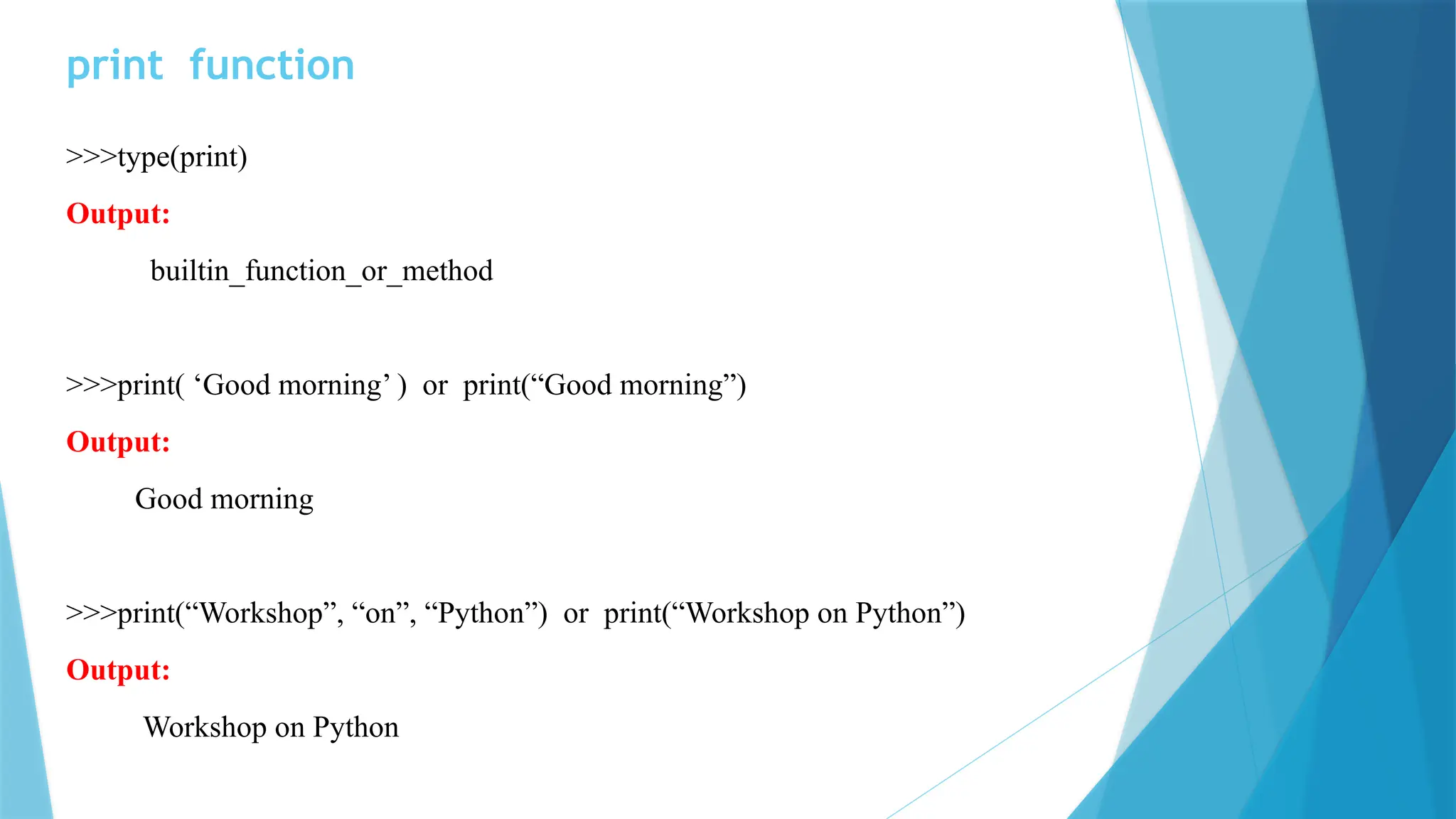
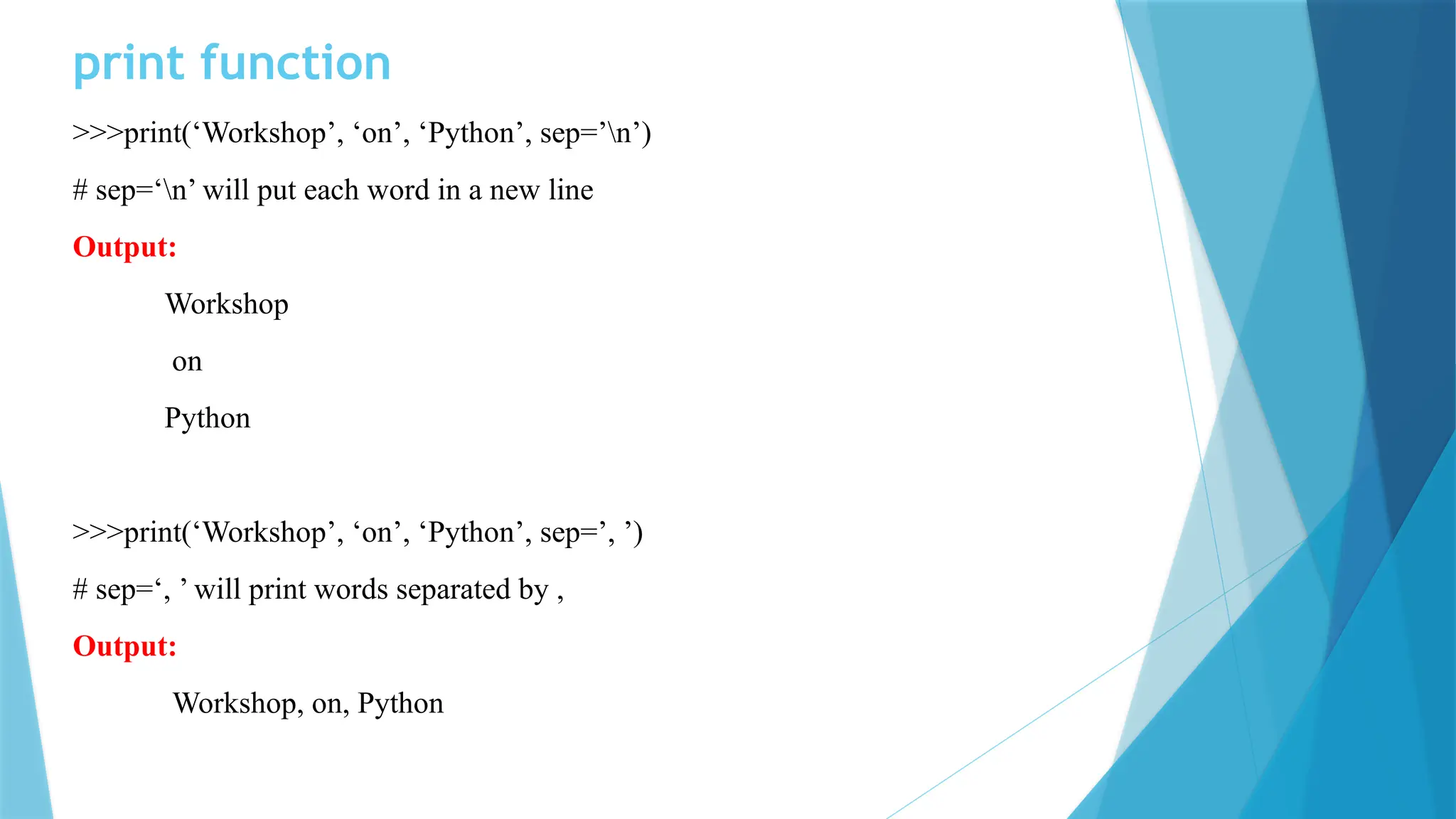
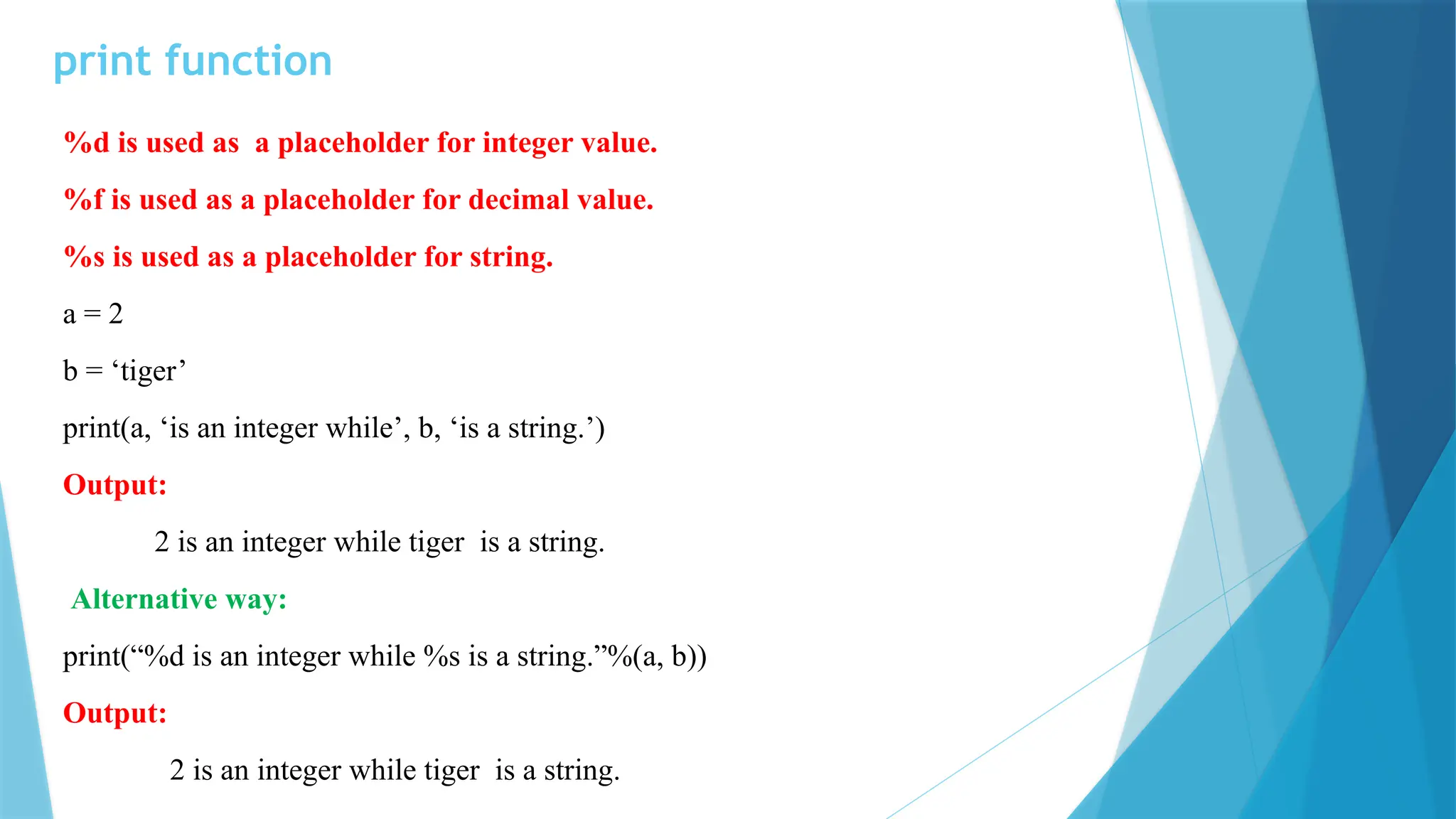
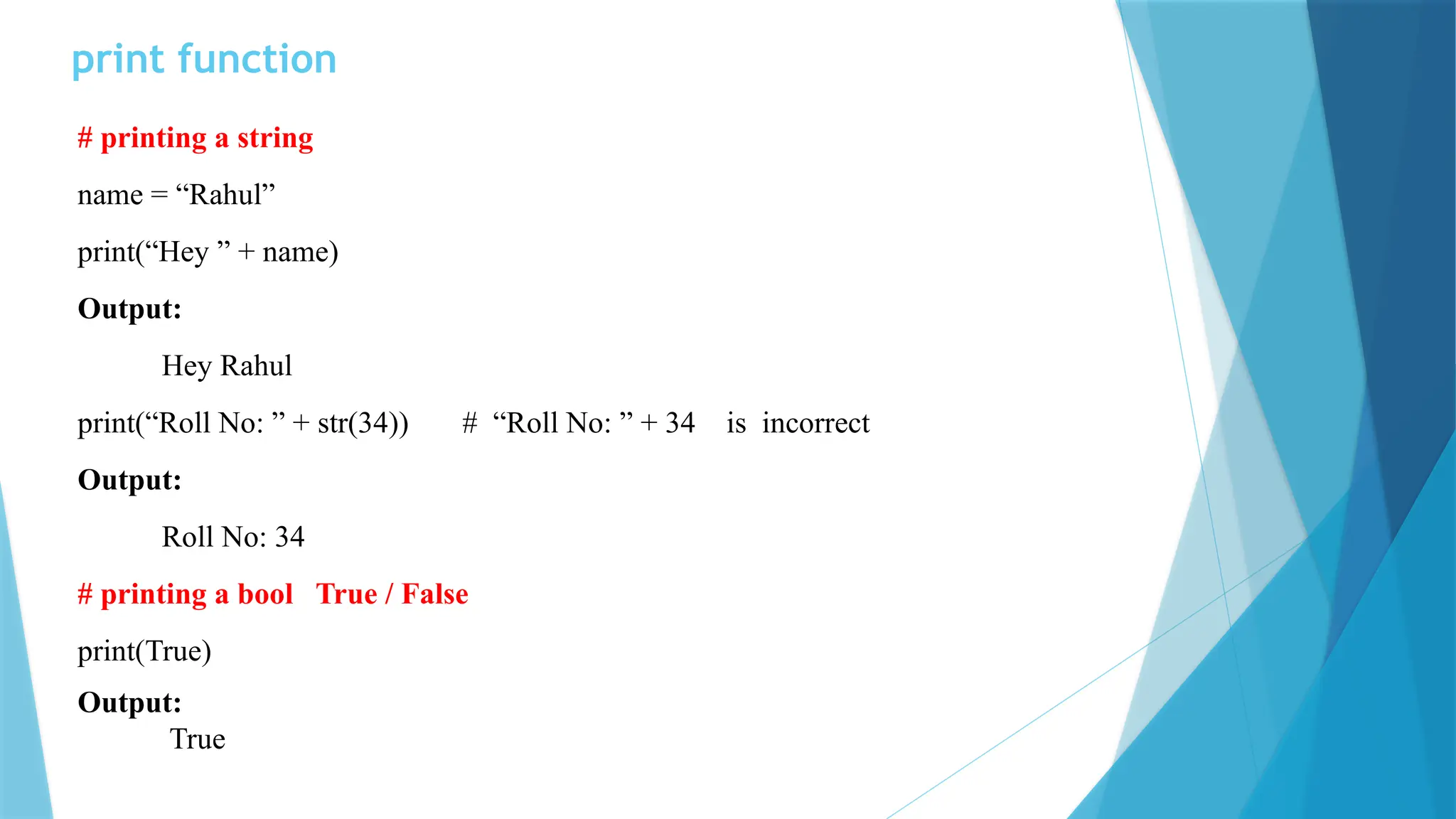
![print function int_list = [1, 2, 3, 4, 5] print(int_list) # printing a list Output: [1, 2, 3, 4, 5] my_tuple = (10, 20, 30) print(my_tuple) # printing a tuple Output: (10, 20, 30) my_dict = {“language”: “Python”, “field”: “data science”} print(my_dict) # printing a dictionary Output: {“language”: “Python”, “field”: “data science”} my_set = {“red”, “yellow”, “green”, “blue”} print(my_set) #printing a set Output: {“red”, “yellow”, “green”, “blue”}](https://image.slidesharecdn.com/chapter1-241210042623-557047d6/75/Chapter1-python-introduction-syntax-general-26-2048.jpg)
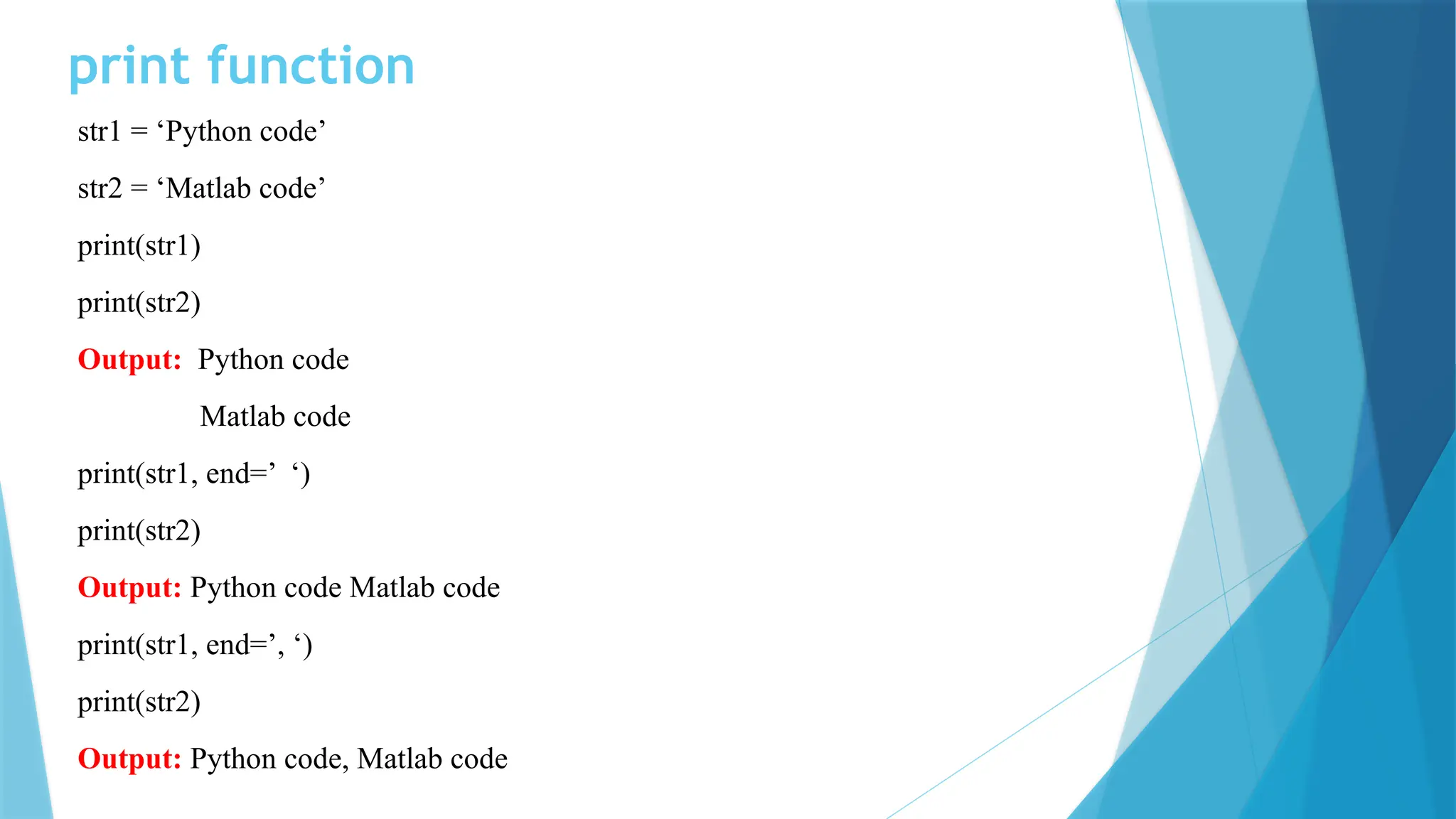
![print function items = [ 1, 2, 3, 4, 5] for item in items: print(item) Output: 1 2 3 4 5 items = [ 1, 2, 3, 4, 5] for item in items: print(item, end=’ ‘) Output: 1 2 3 4 5](https://image.slidesharecdn.com/chapter1-241210042623-557047d6/75/Chapter1-python-introduction-syntax-general-28-2048.jpg)
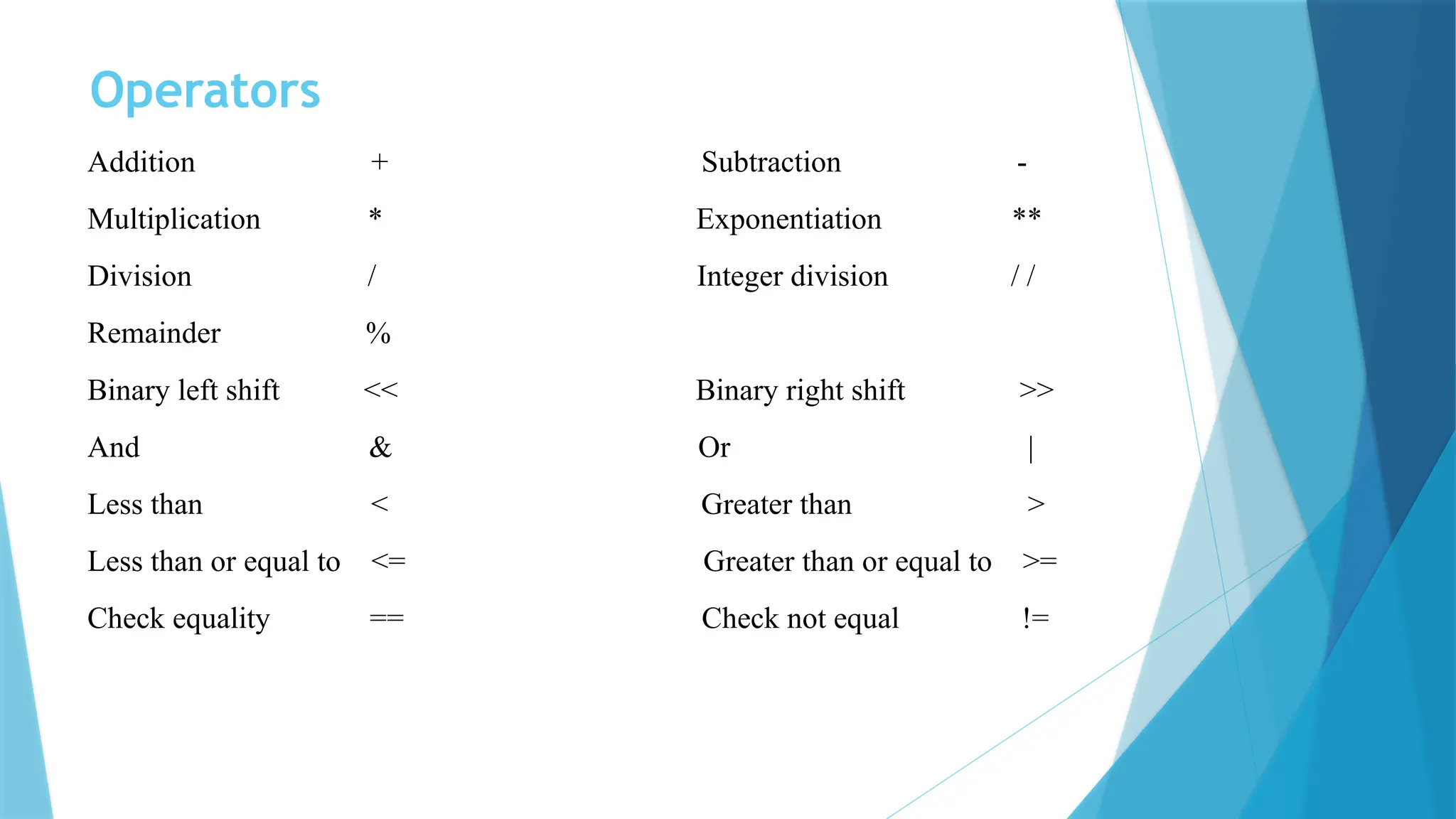
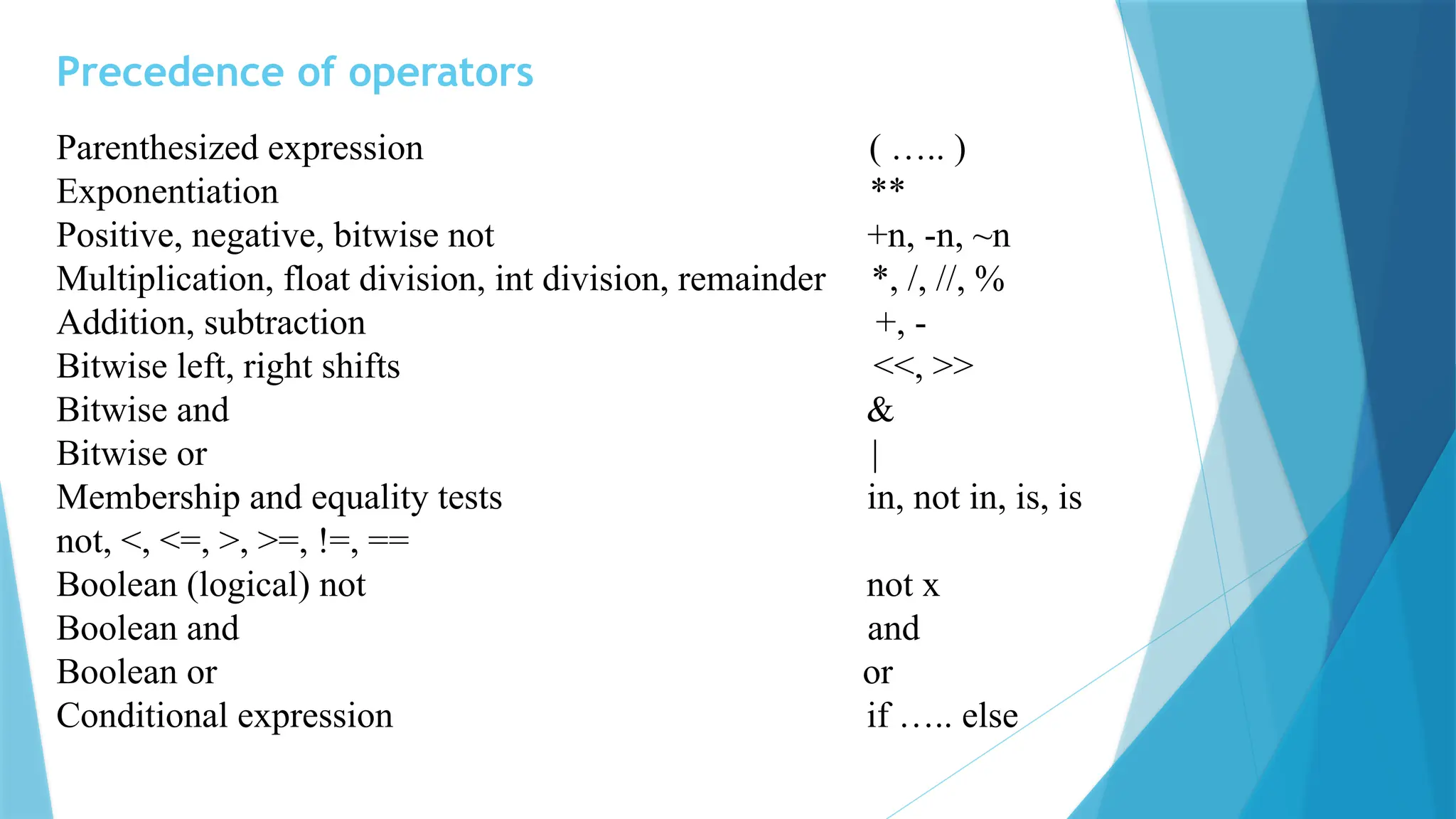
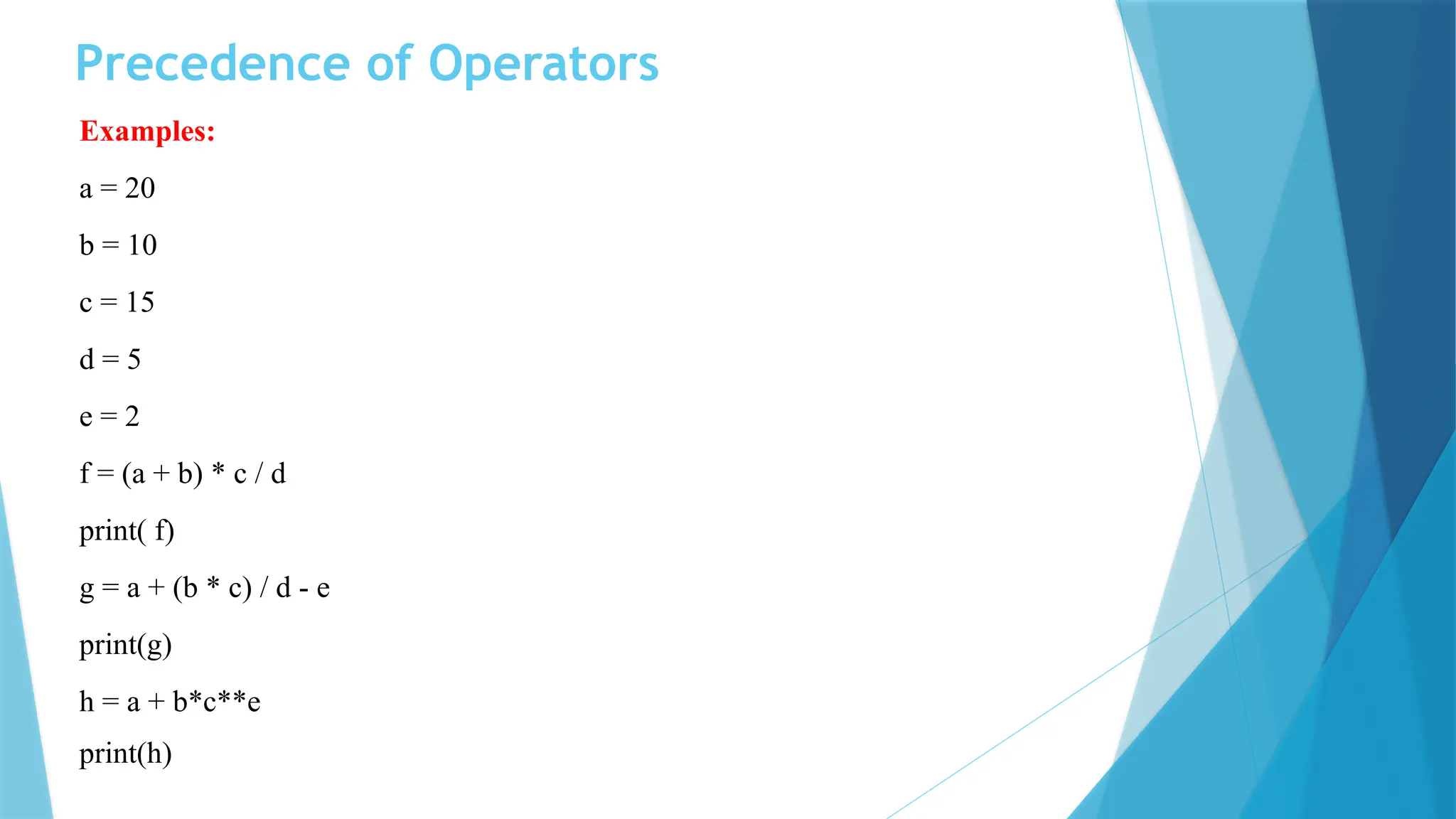
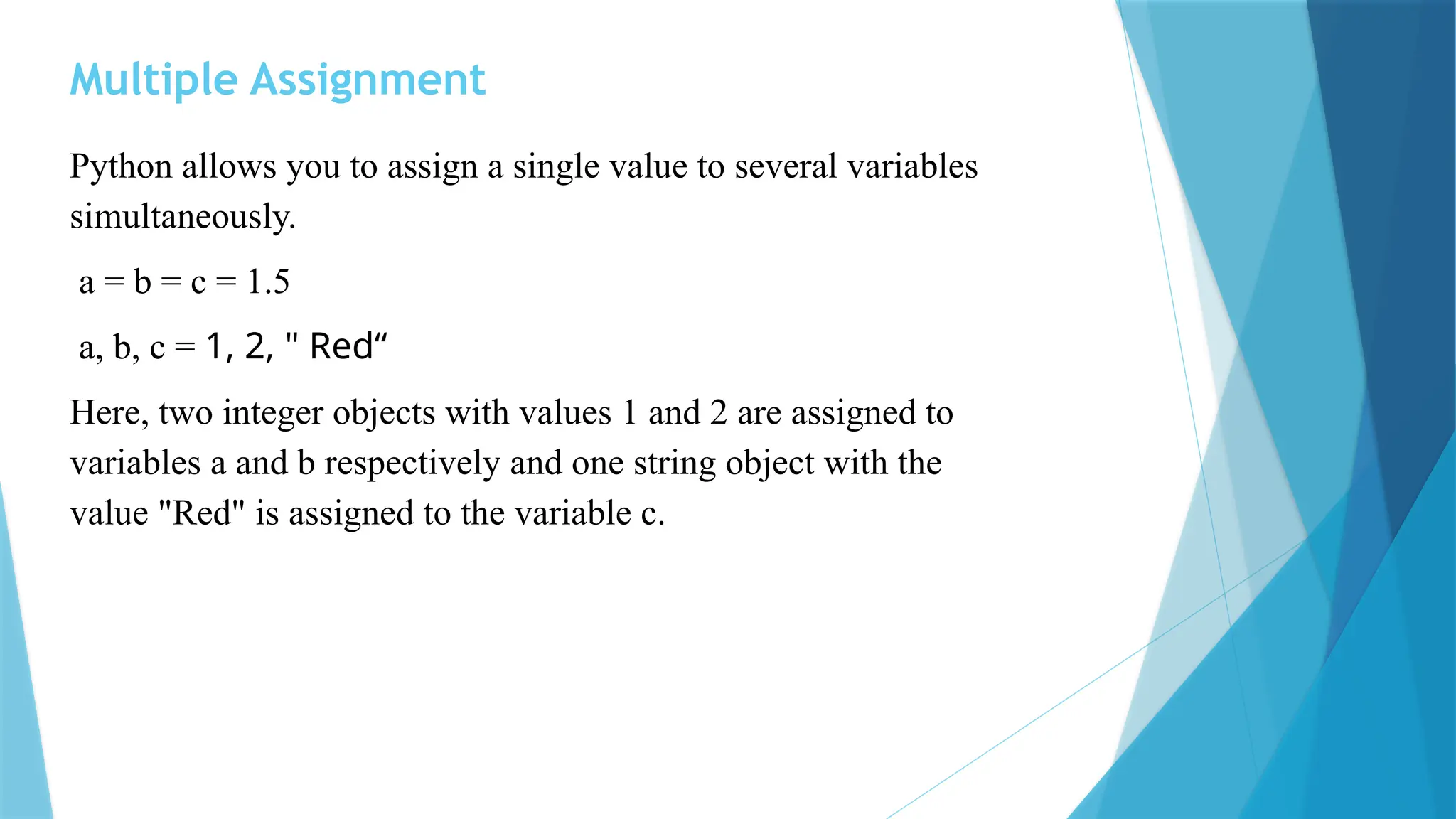
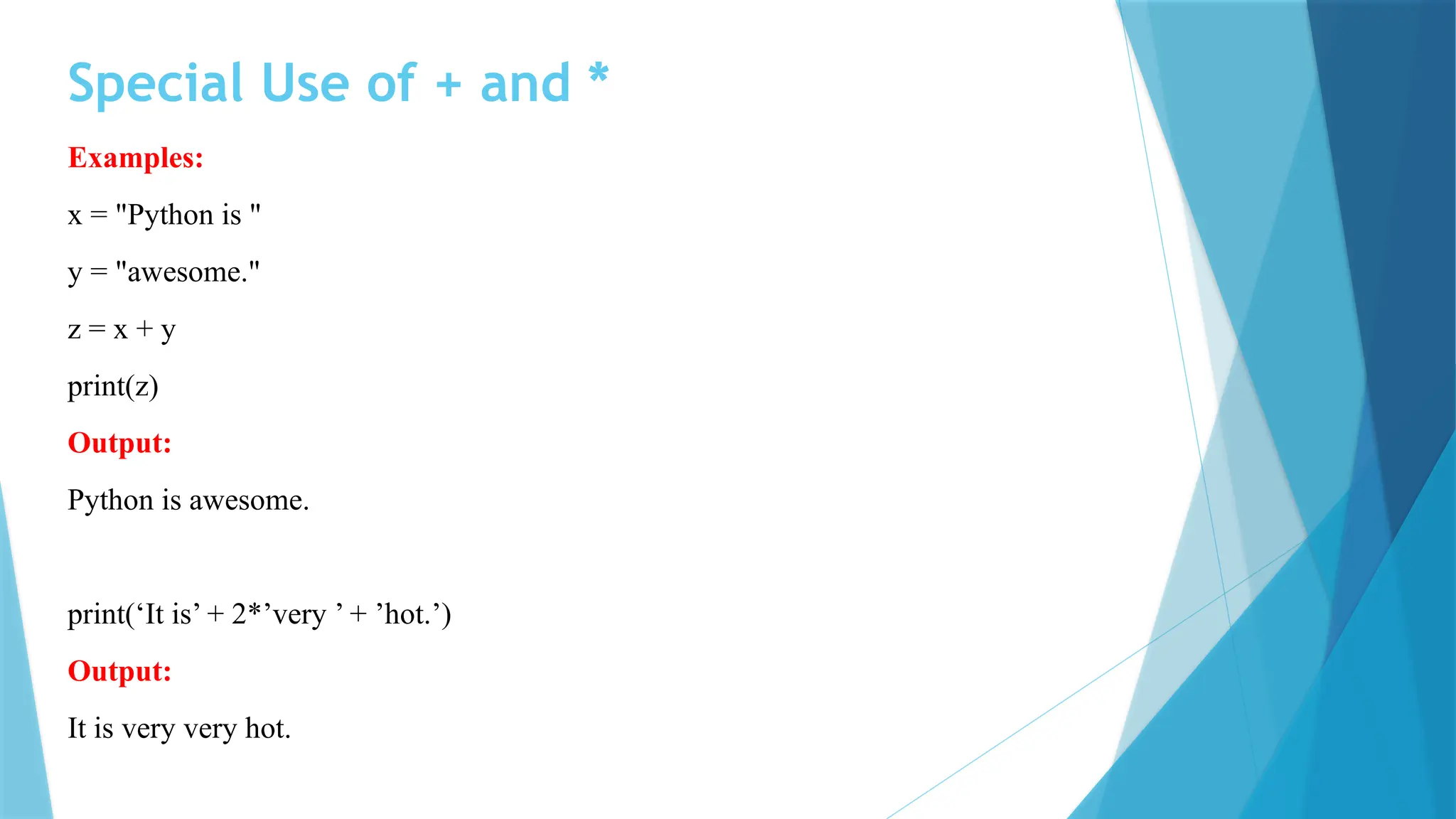
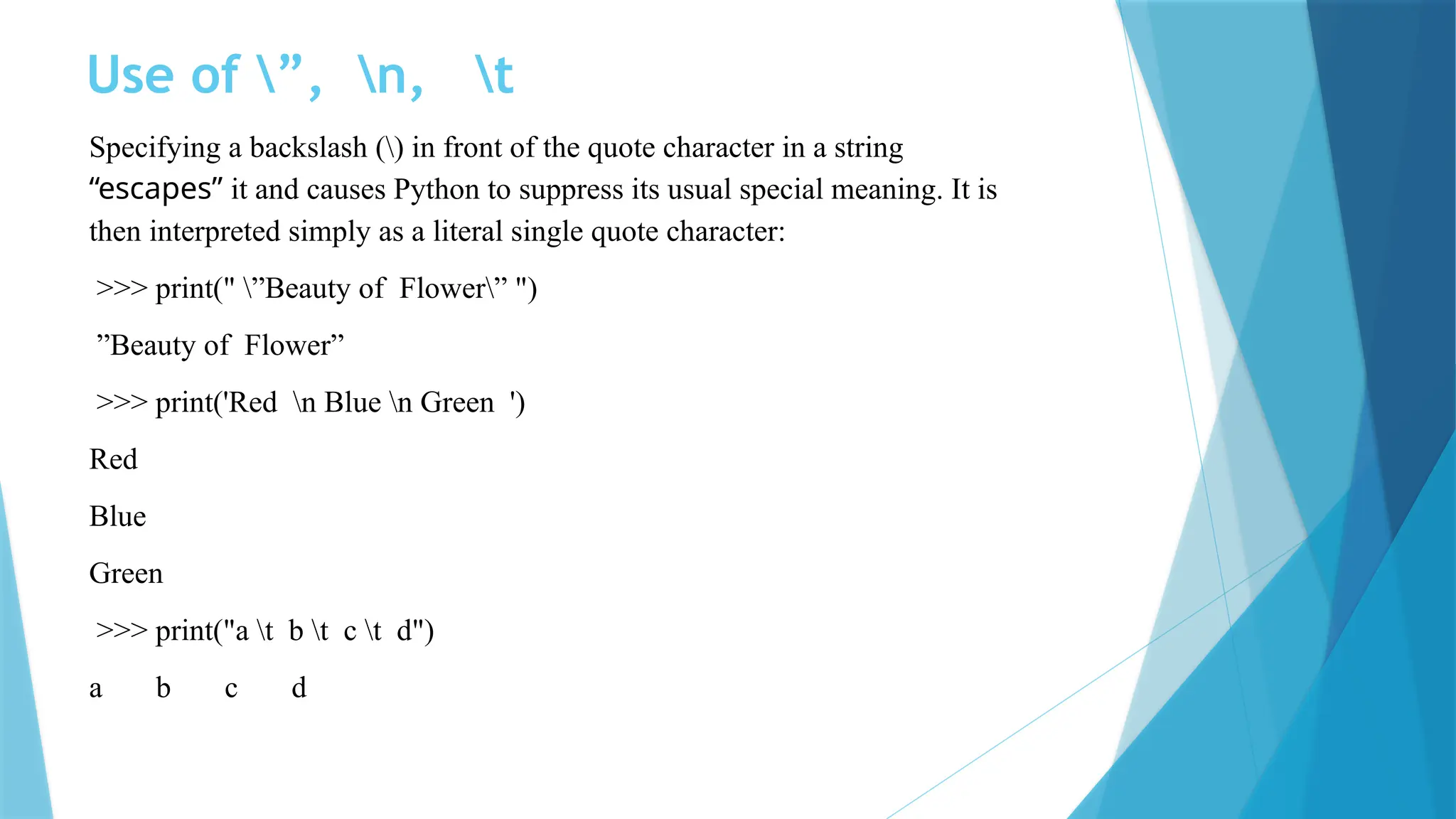
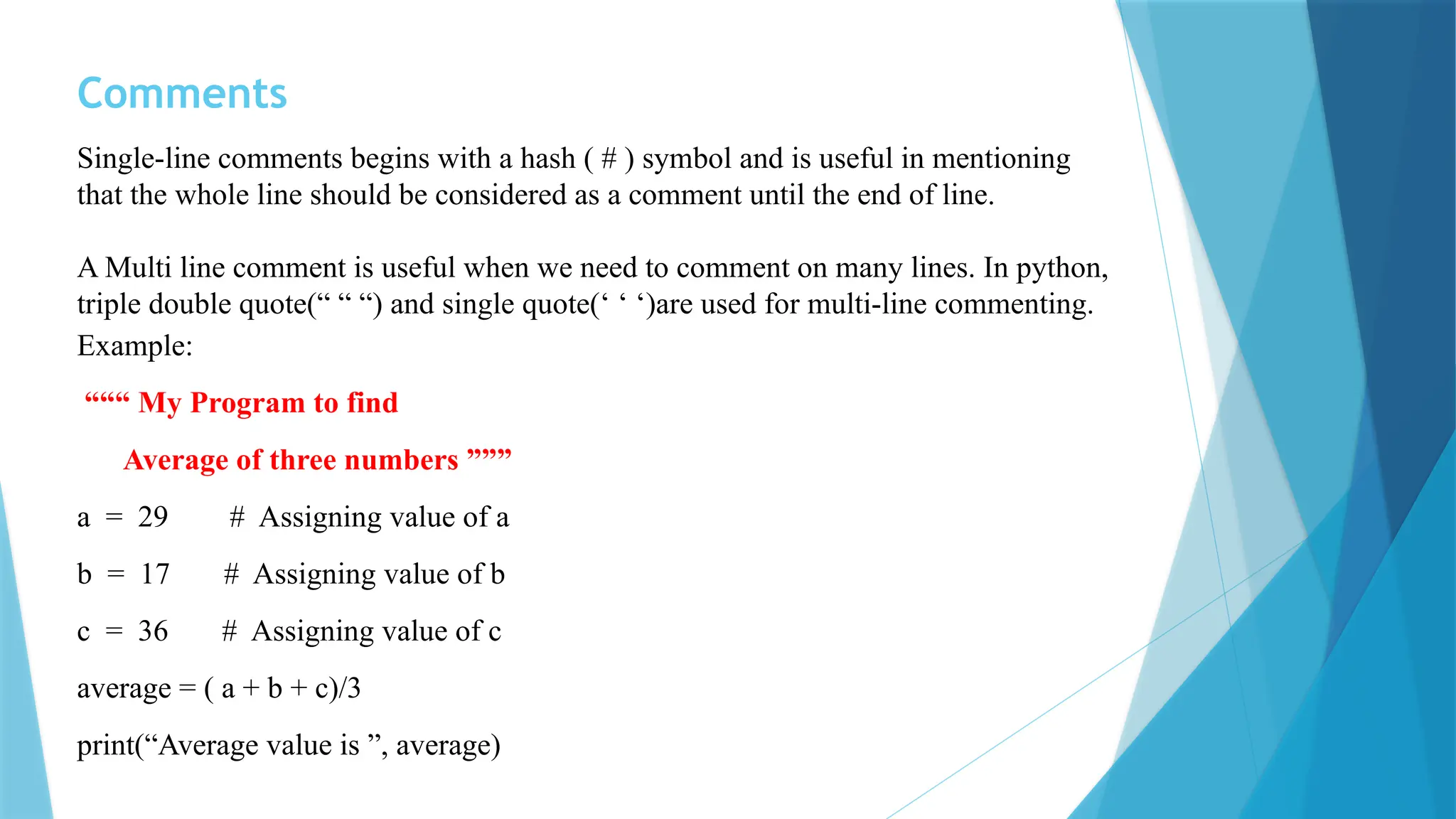
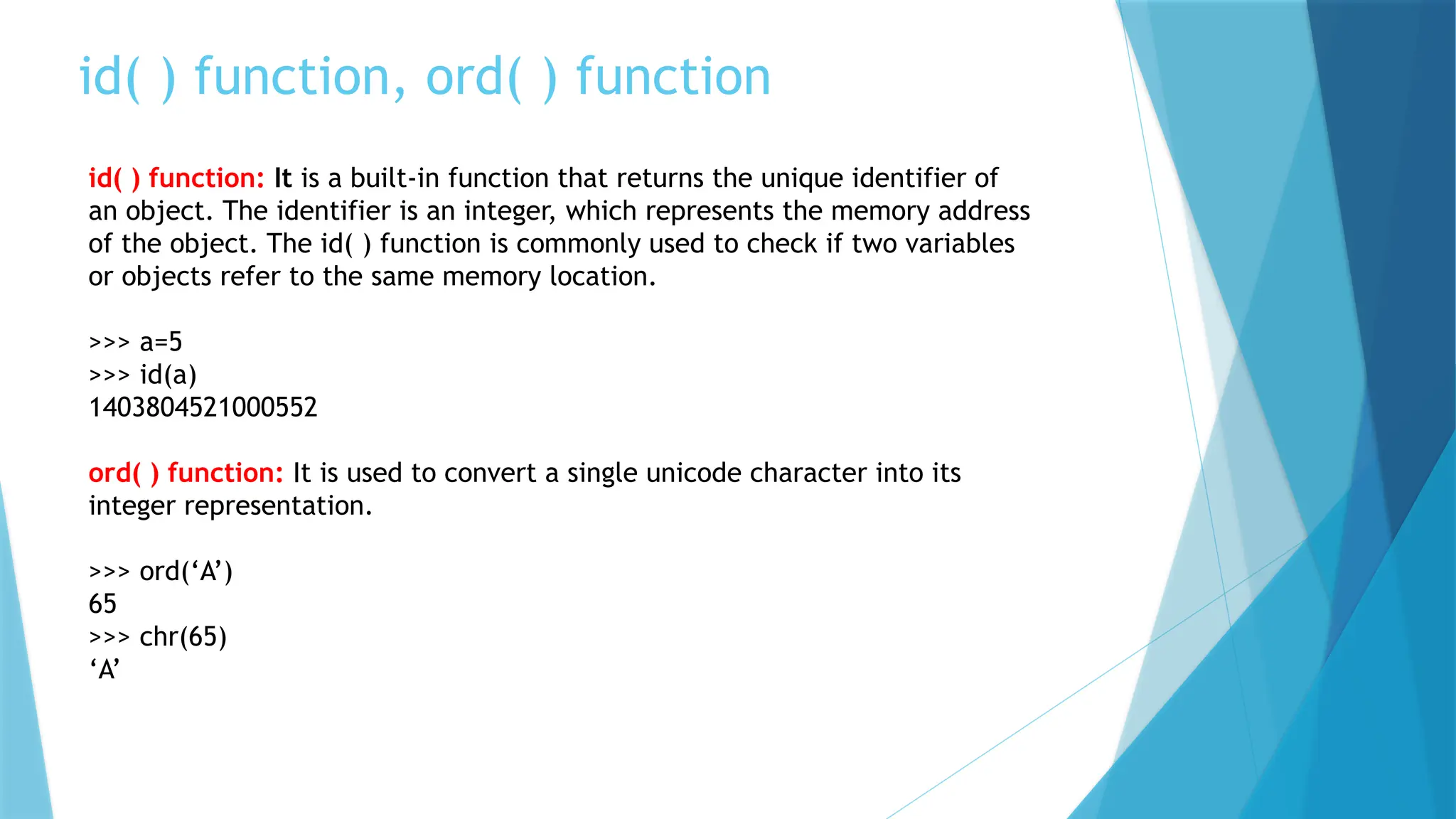

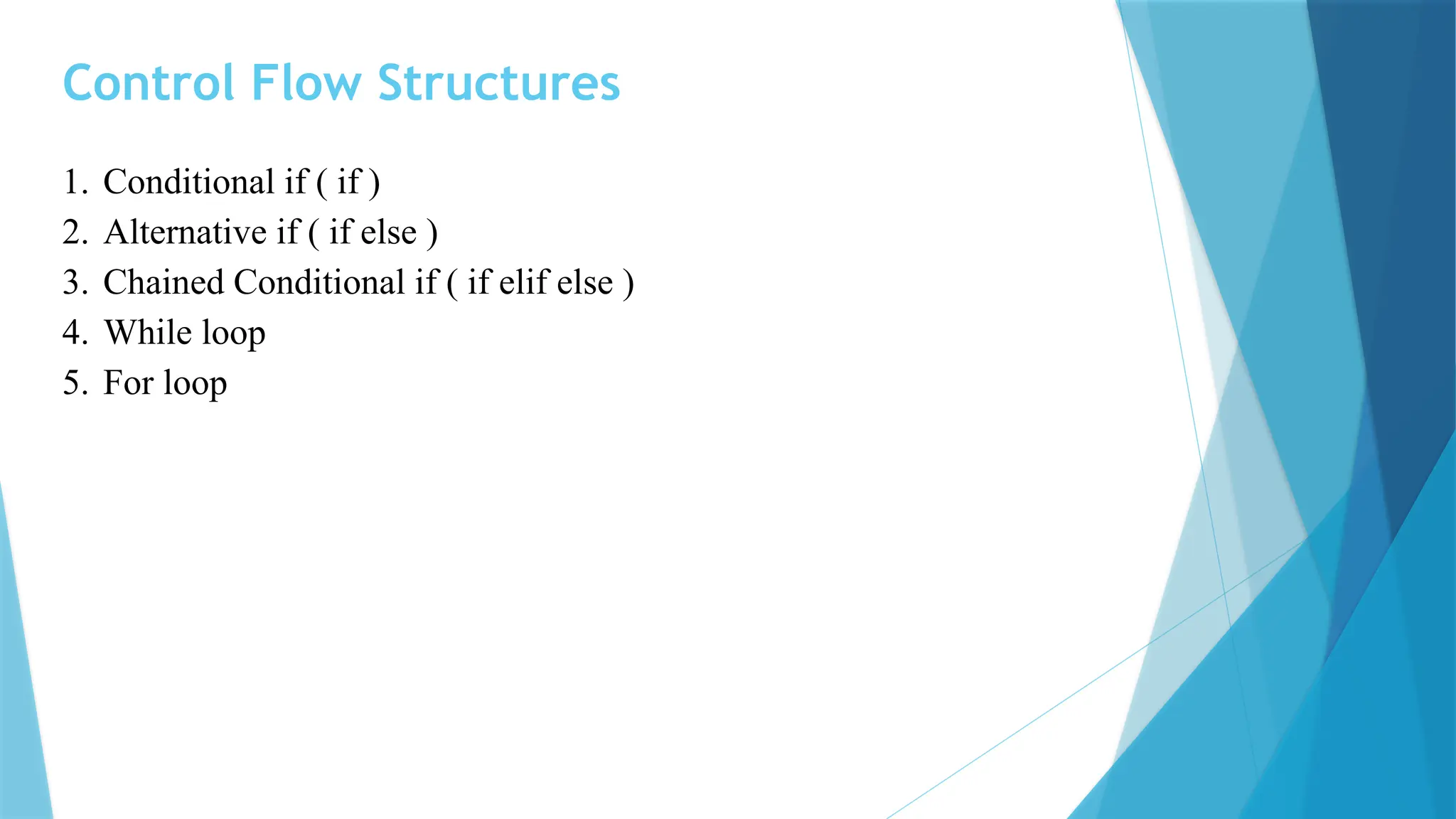
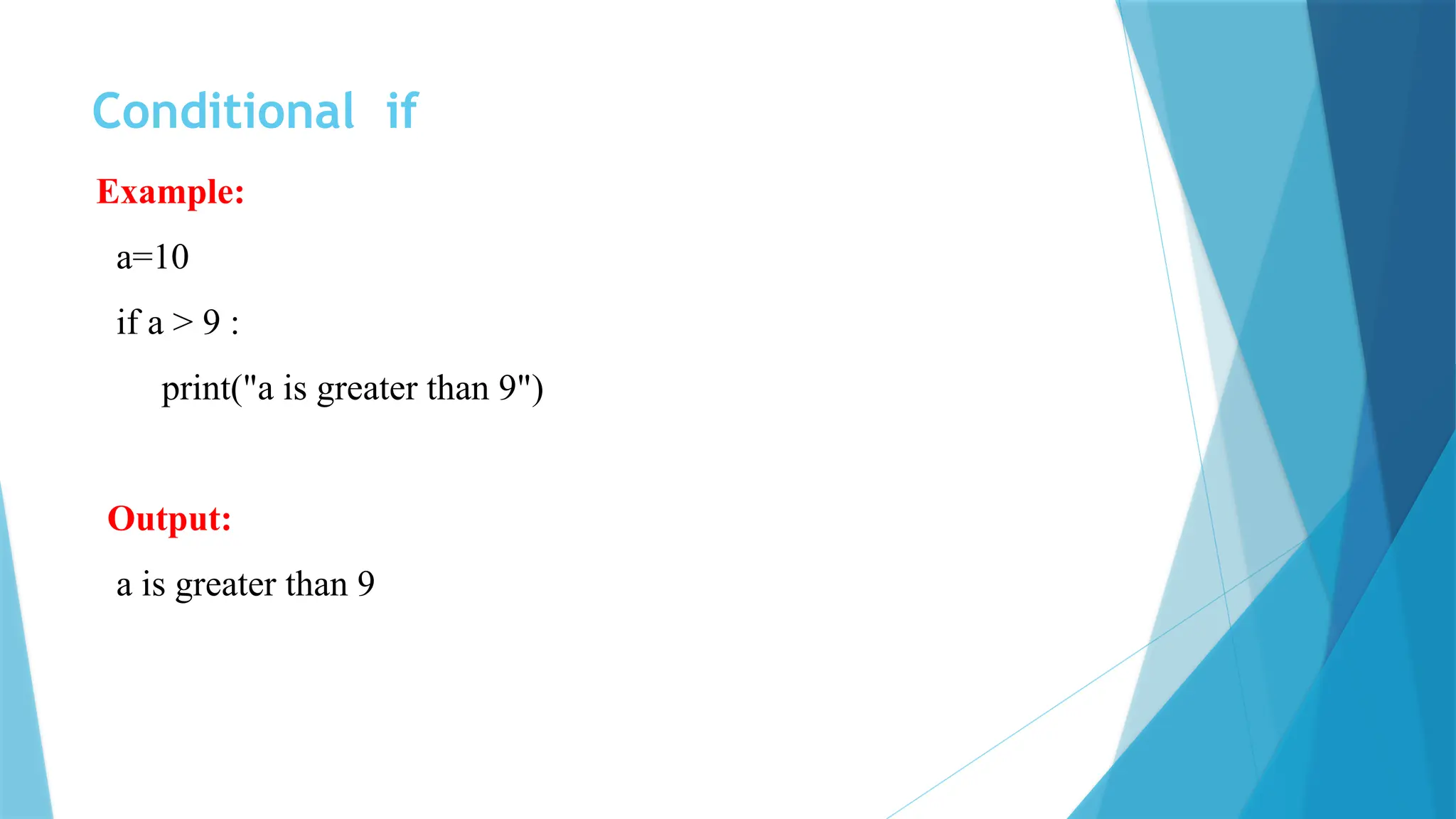
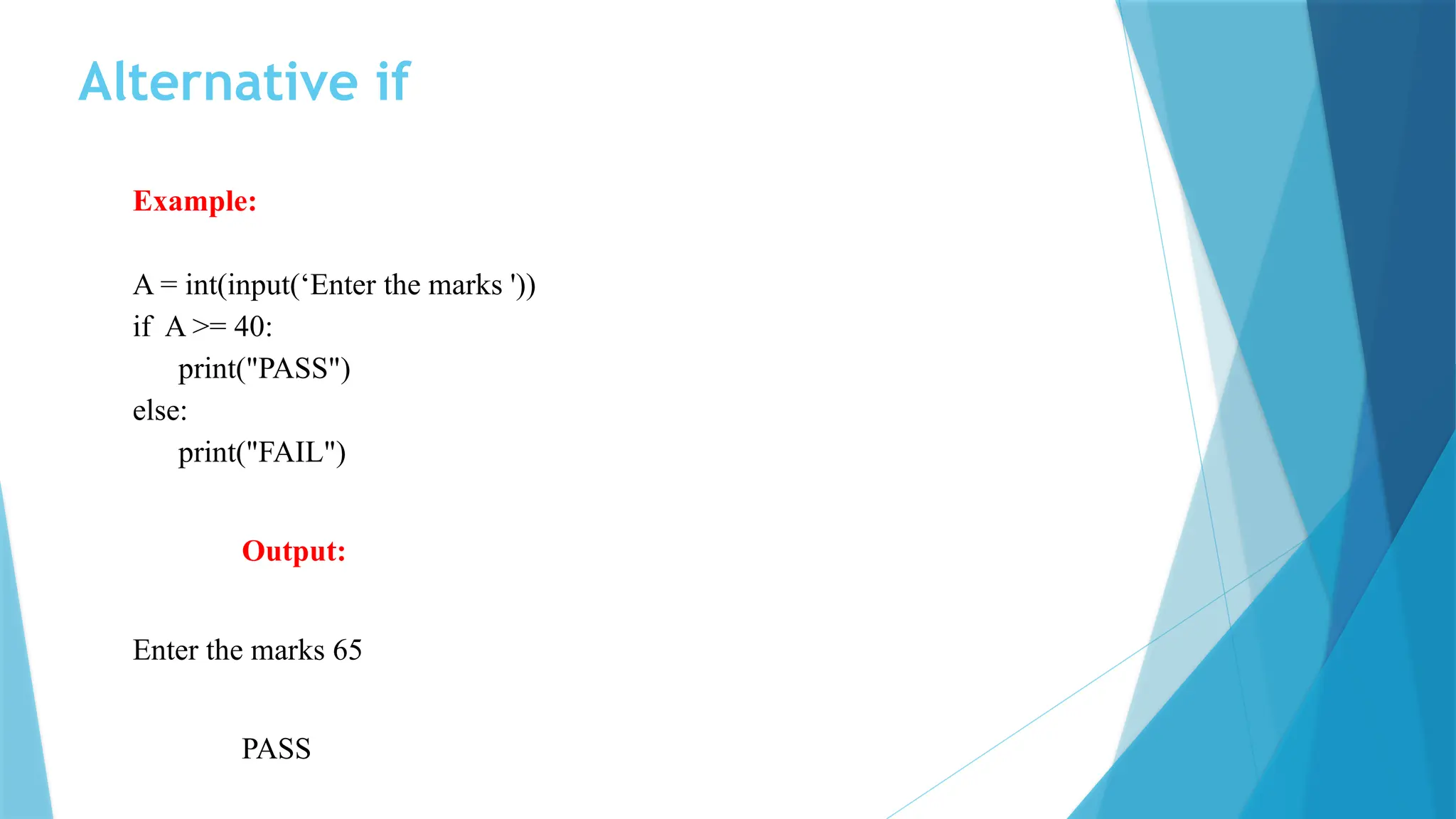
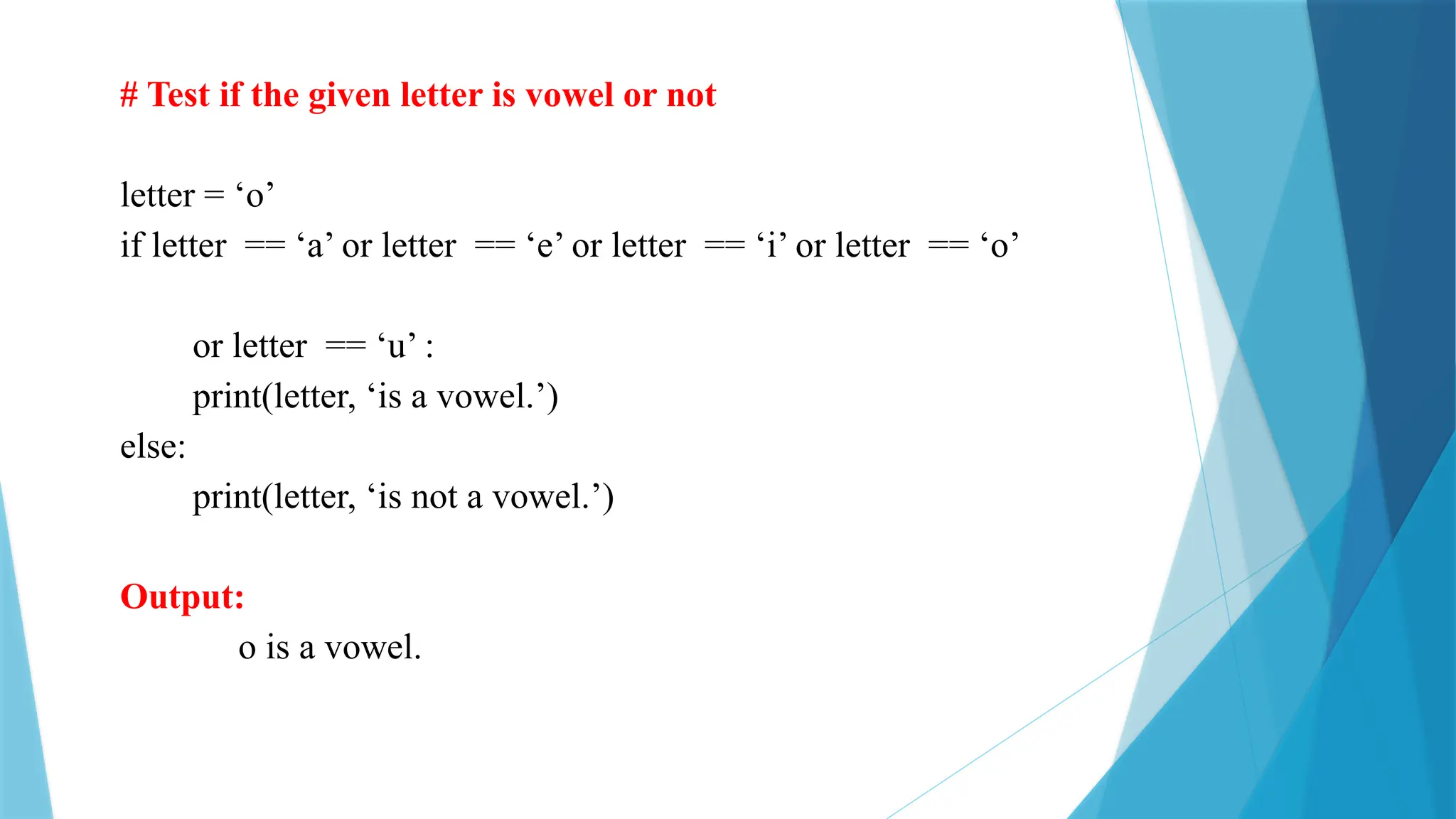
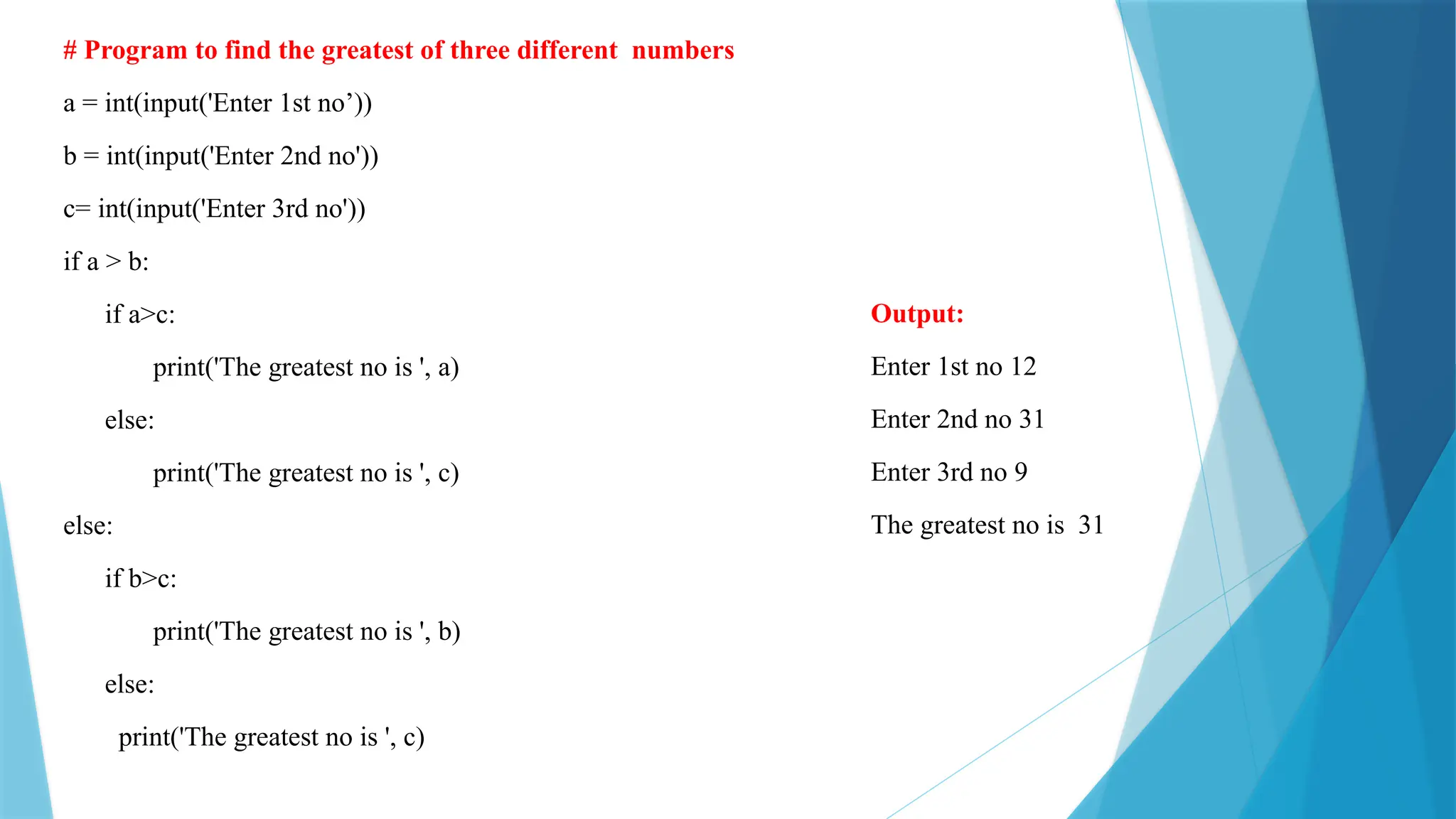
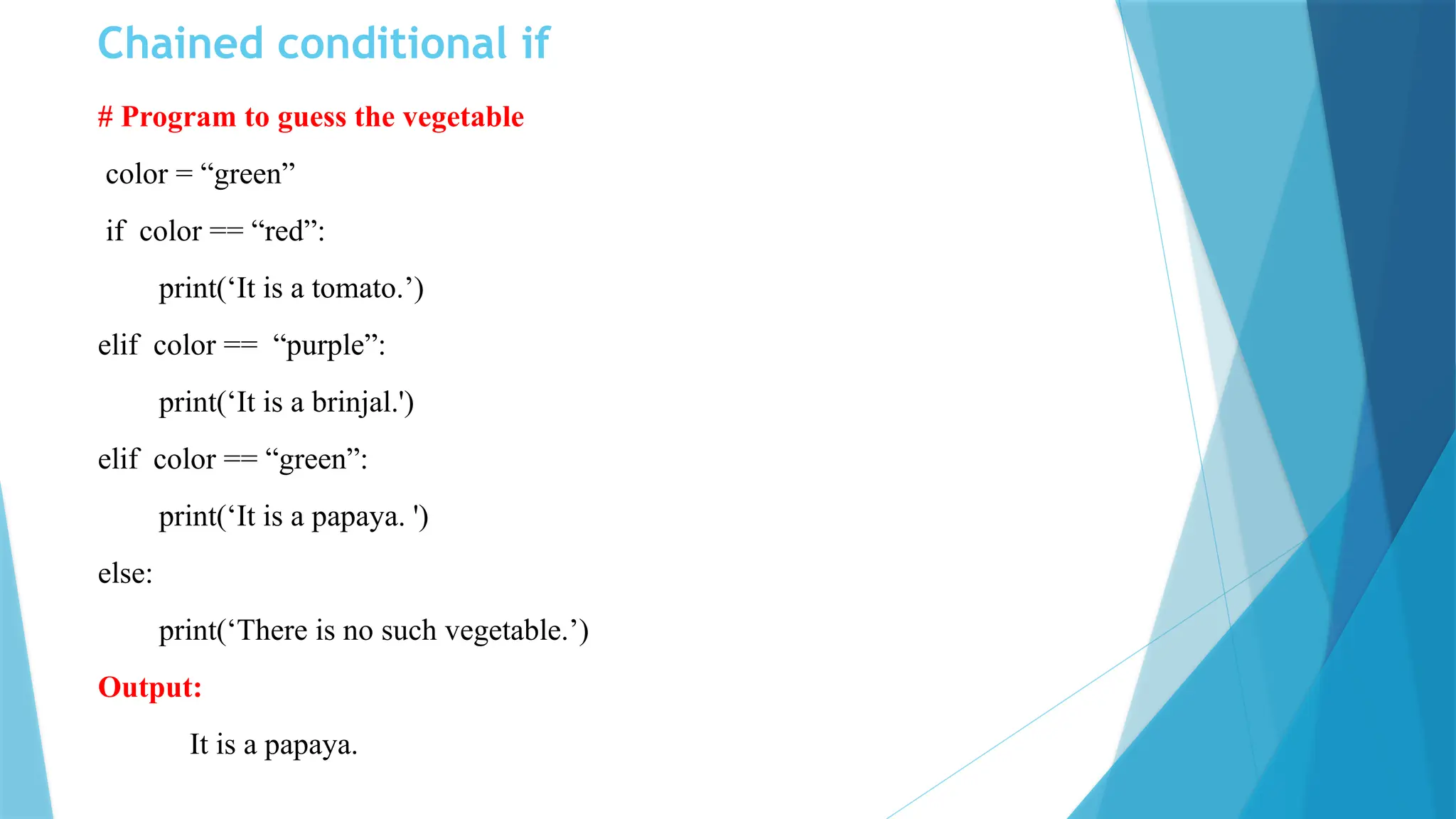
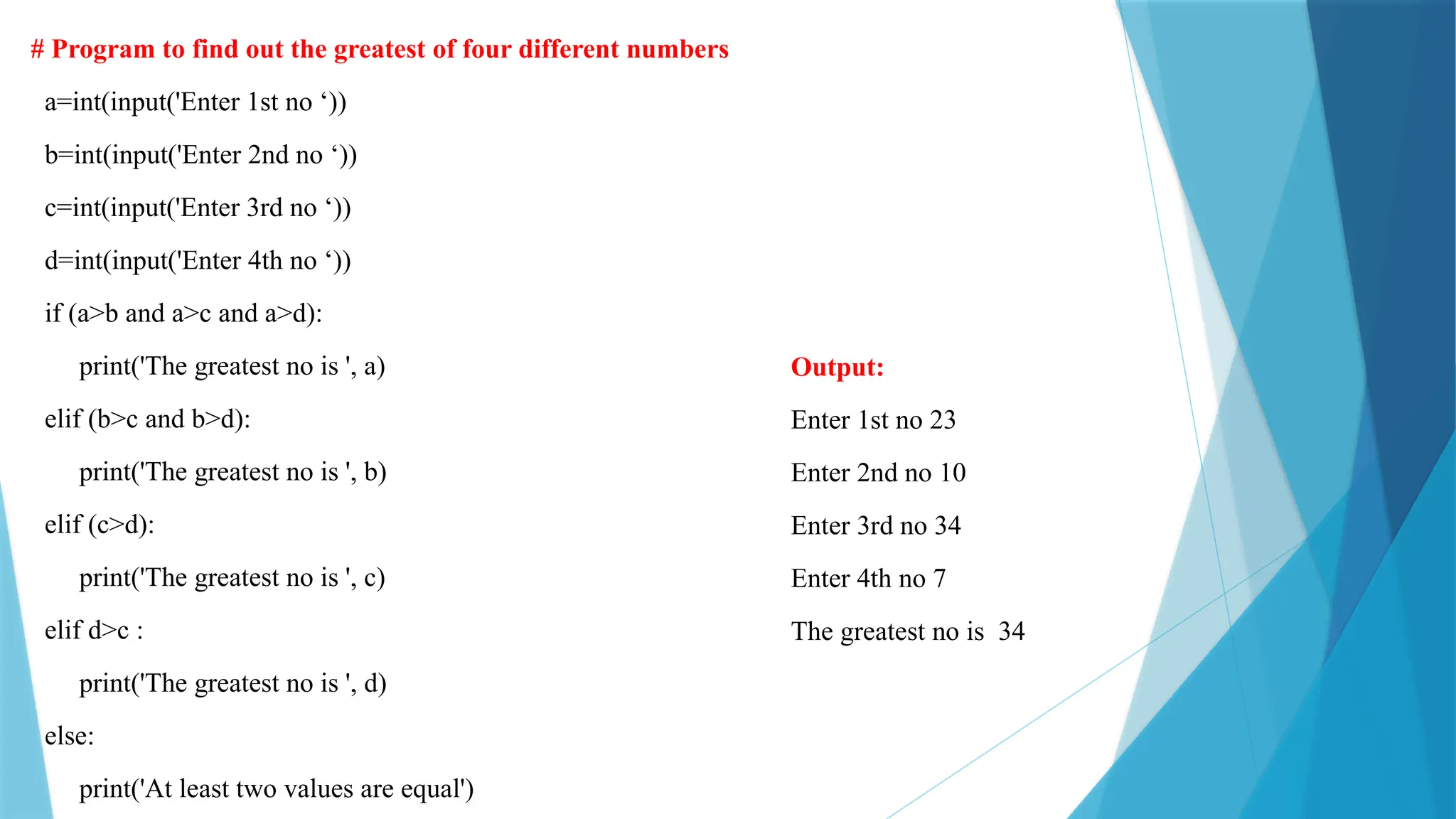
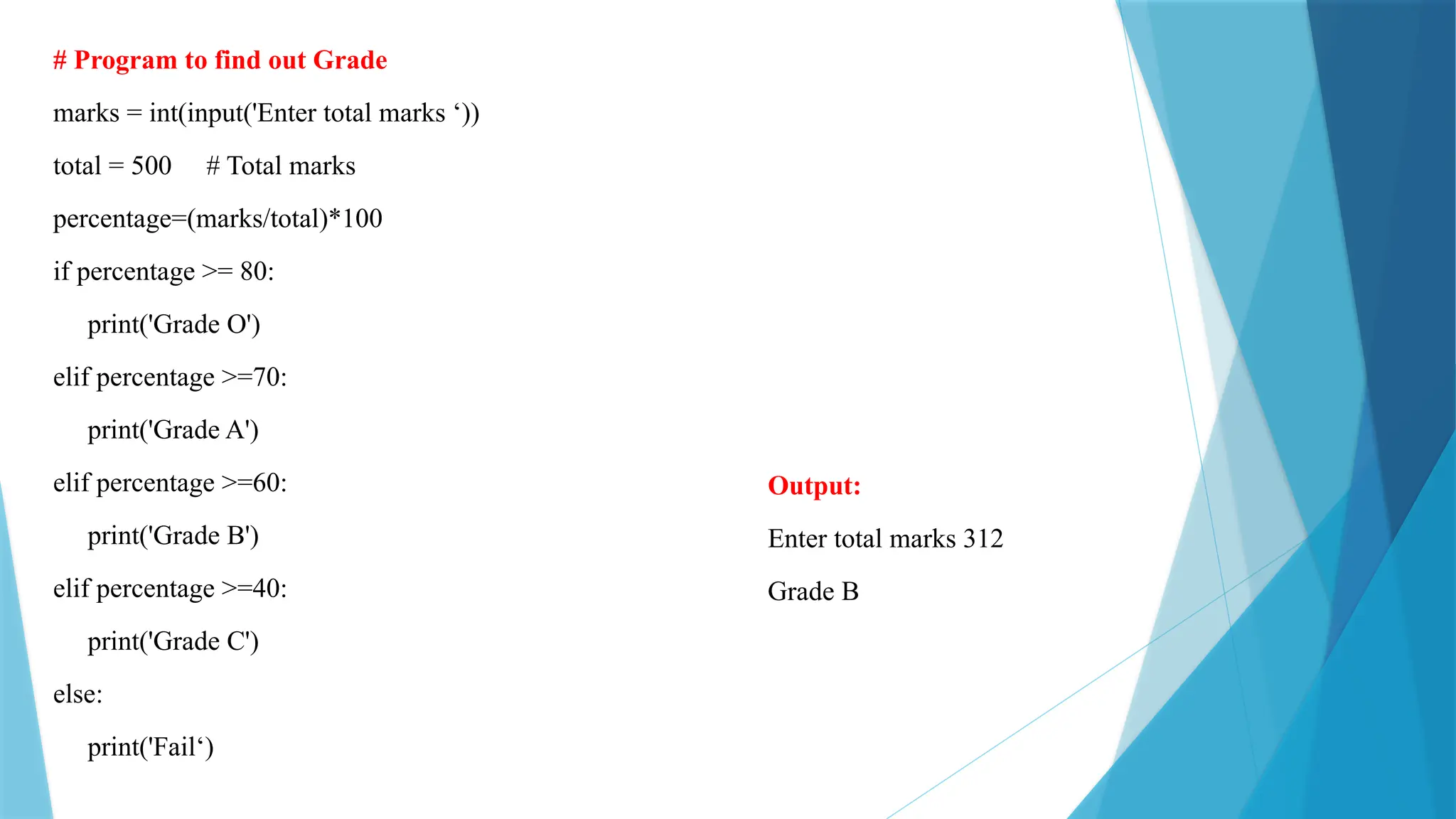
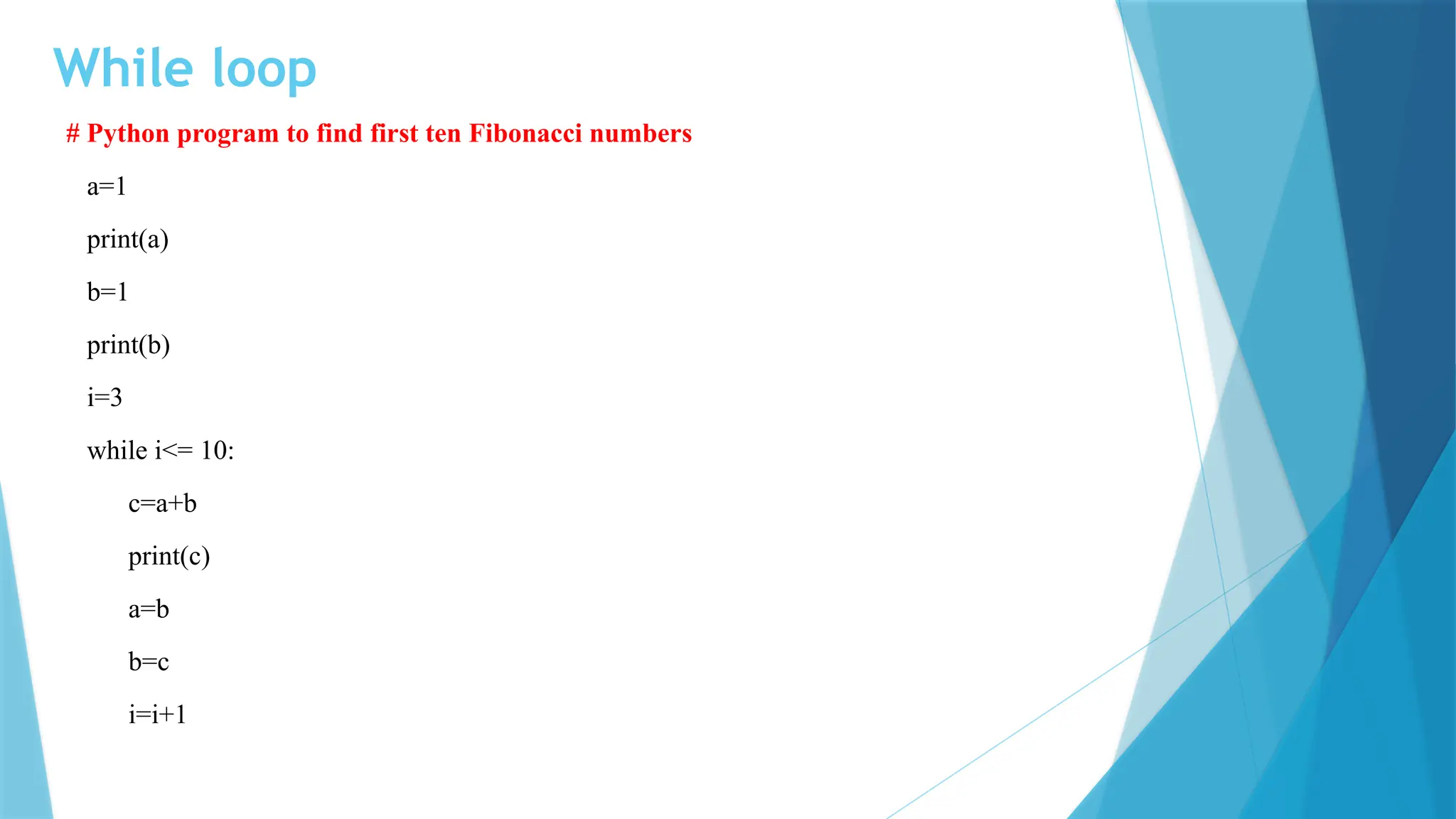
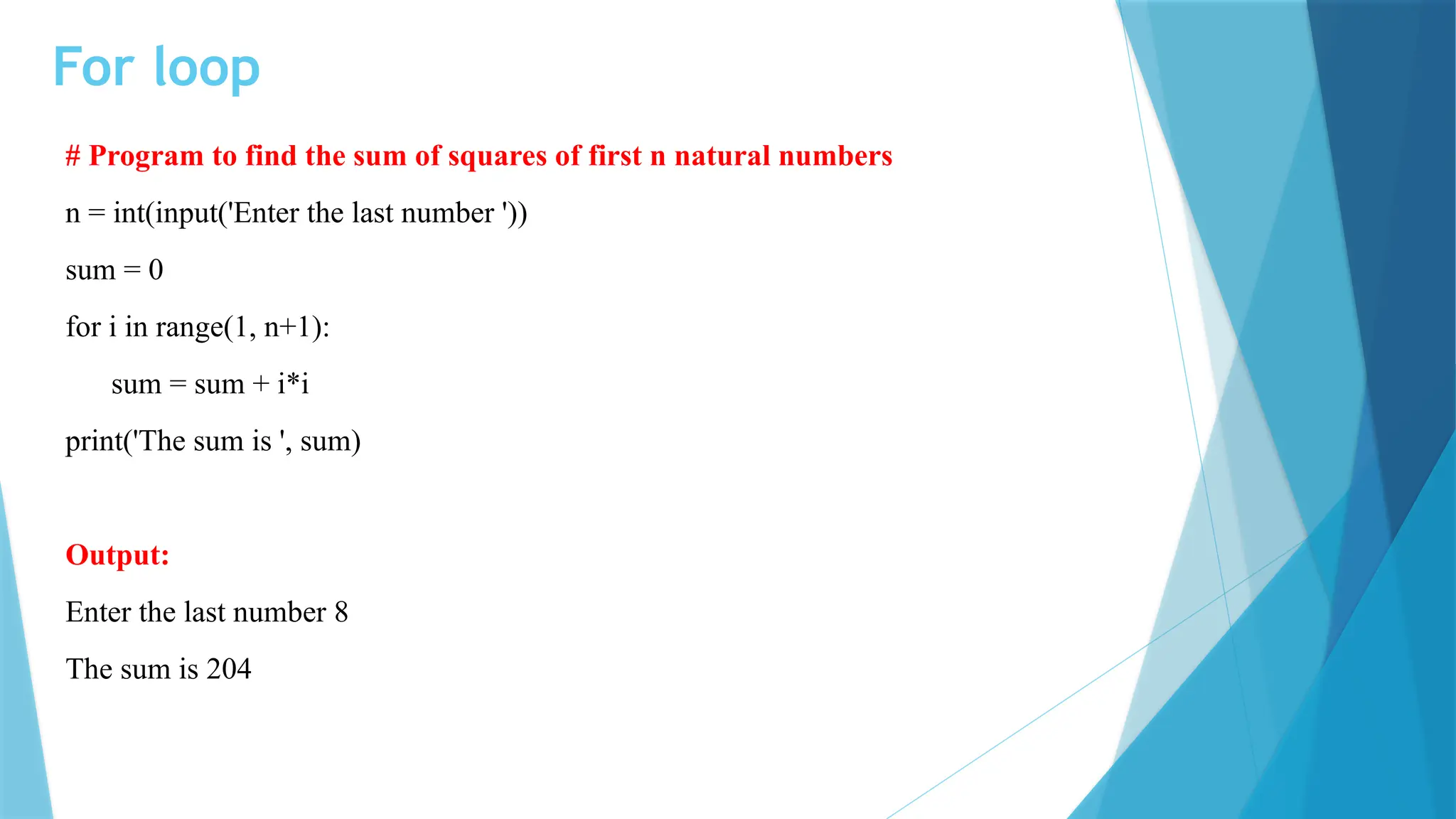
![For loop # Program to find the sum of a given set of numbers numbers = [11, 17, 24, 65, 32, 69] sum = 0 for no in numbers: sum = sum + no print('The sum is ', sum) Output: The sum is 218](https://image.slidesharecdn.com/chapter1-241210042623-557047d6/75/Chapter1-python-introduction-syntax-general-48-2048.jpg)
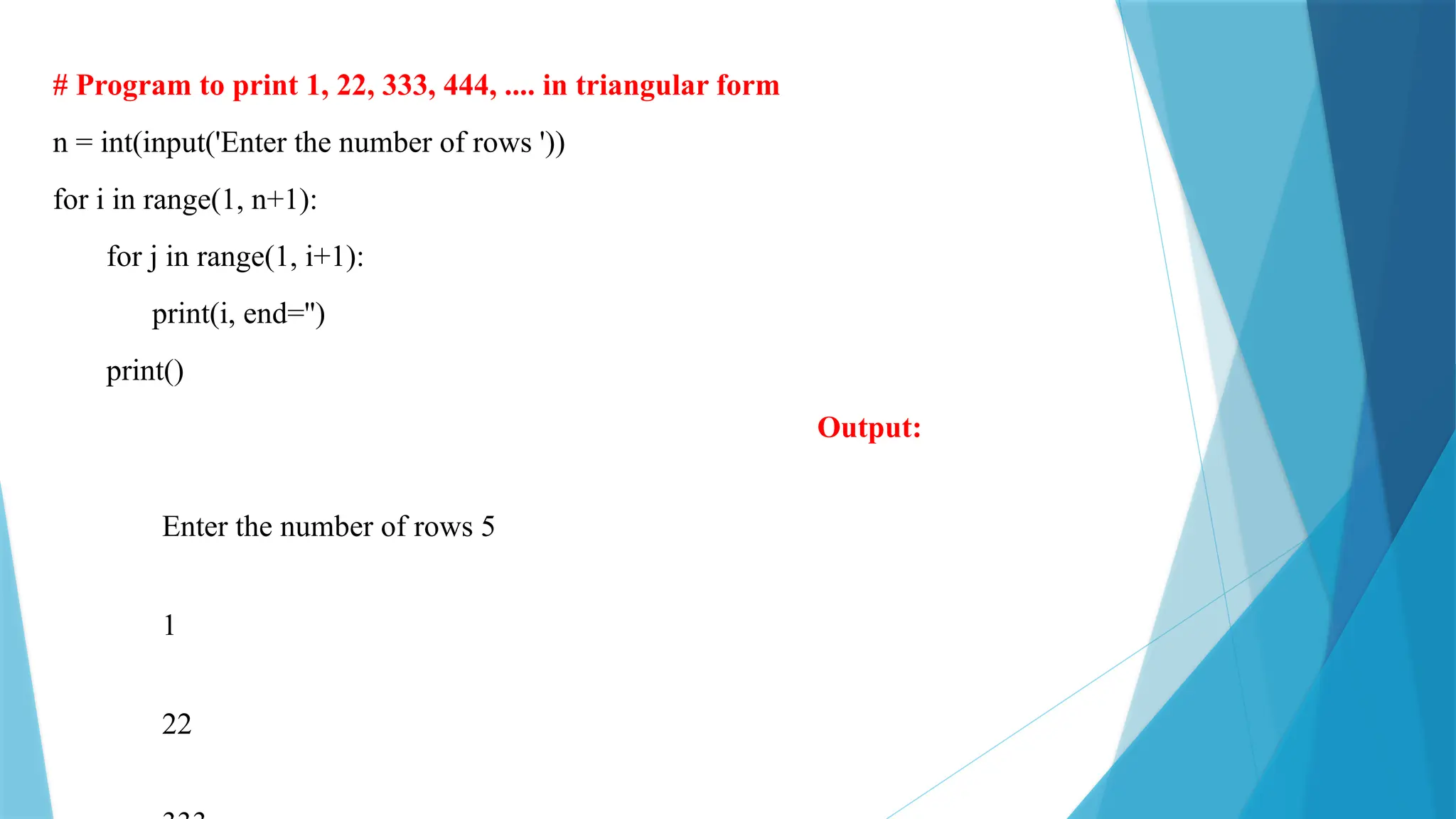
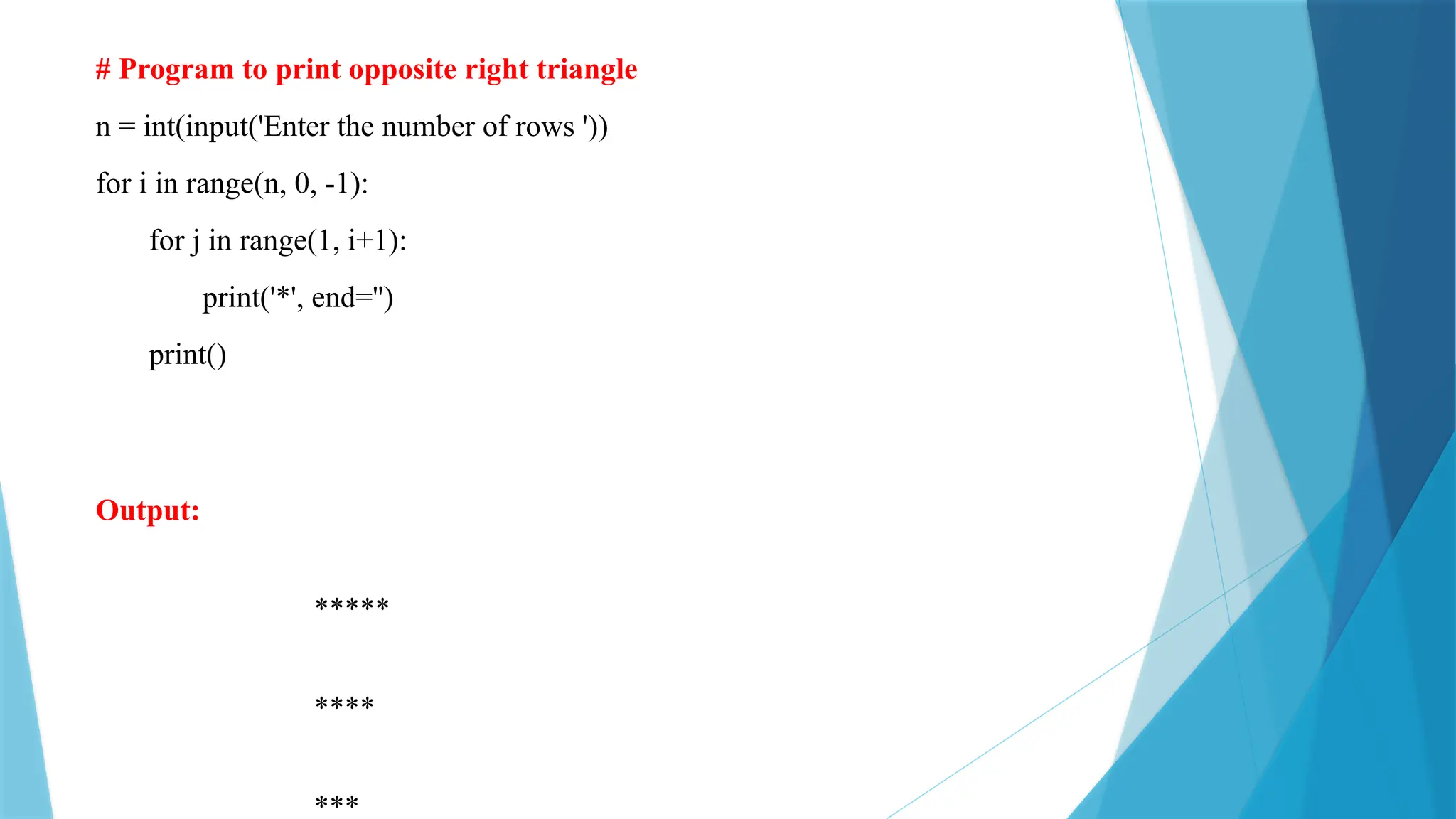
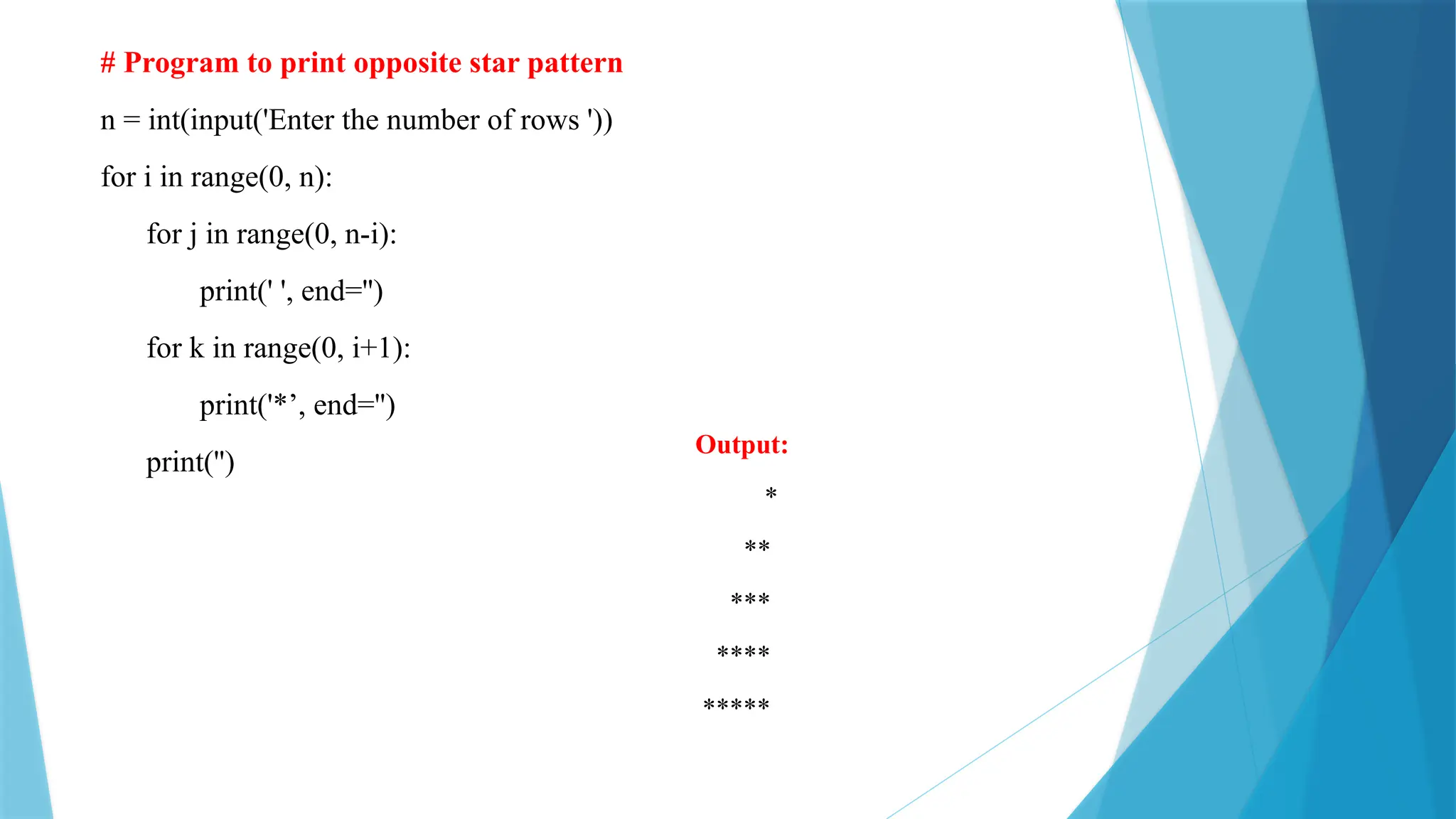
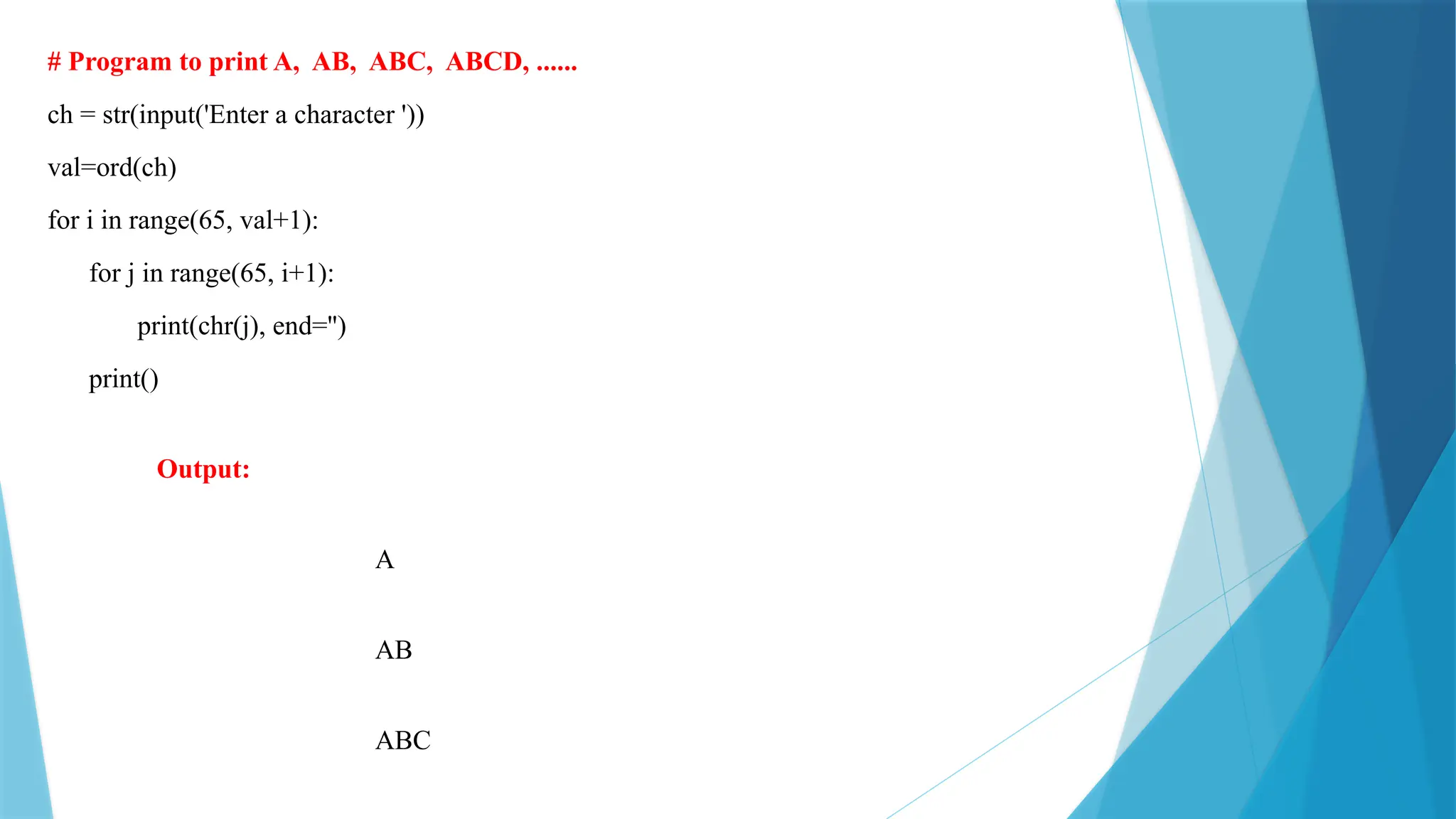
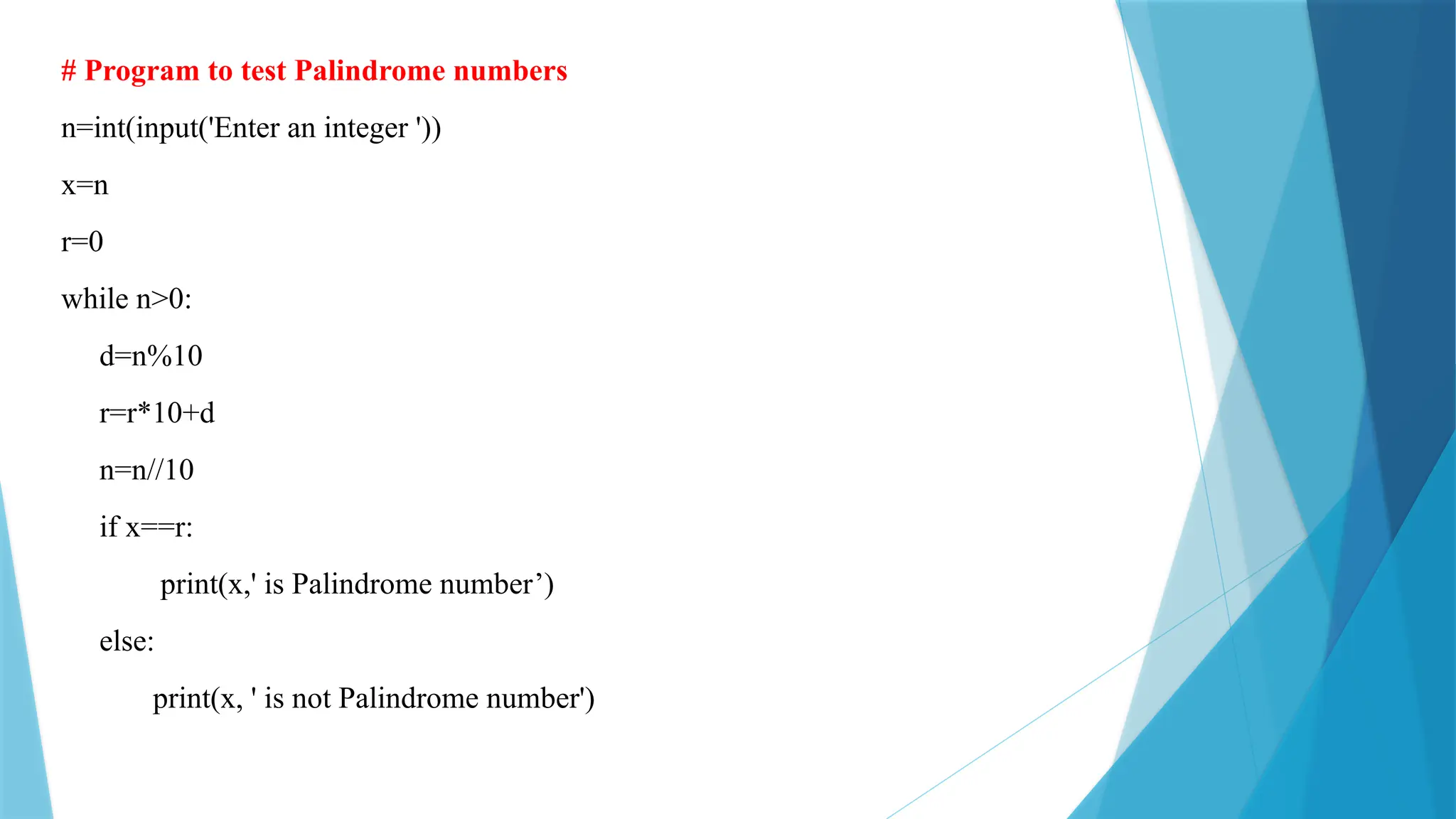
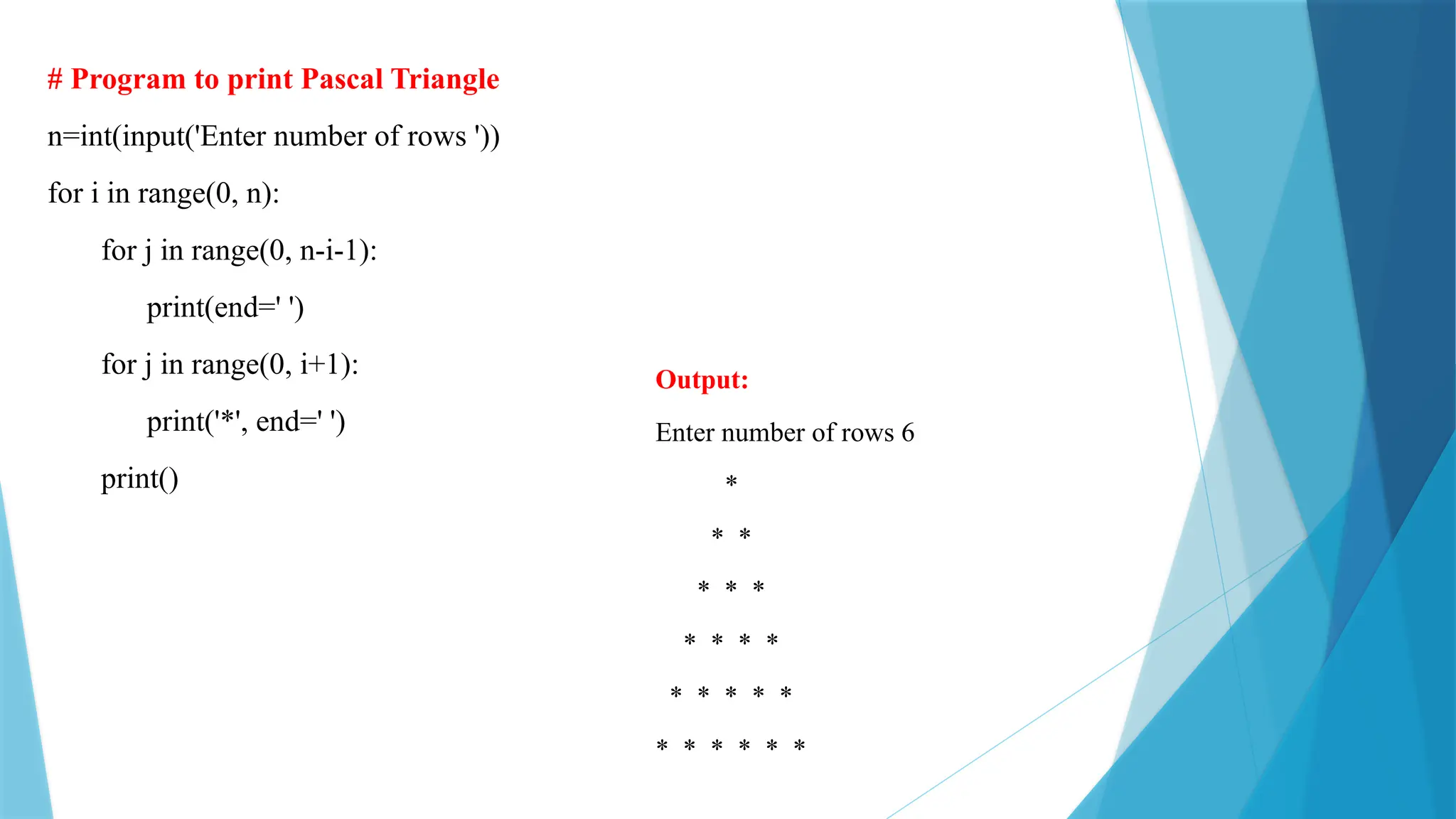
![Break and Continue In Python, break and continue statements can alter the flow of a normal loop. # Searching for a given number numbers = [11, 9, 88, 10, 90, 3, 19] for num in numbers: if(num==88): print("The number 88 is found") break Output: The number 88 is found](https://image.slidesharecdn.com/chapter1-241210042623-557047d6/75/Chapter1-python-introduction-syntax-general-55-2048.jpg)
![Break and Continue # program to display only odd numbers for num in [20, 11, 9, 66, 4, 89, 44]: # Skipping the iteration when number is even if num%2 == 0: continue # This statement will be skipped for all even numbers else: print(num)](https://image.slidesharecdn.com/chapter1-241210042623-557047d6/75/Chapter1-python-introduction-syntax-general-56-2048.jpg)
![References [1] Kenneth A Lambert, Fundamentals of Python: First programs, 2nd edition – Cengage Learning India, 2019. [2] Saha Amit, Doing Math with Python - No starch press, San Francisco, 2015. [3] E. Balgurusamy, Problem solving and Python programming- Tata McGraw Hill, 2017. [4] Bill Lubanovic, Introducing Python, Shroff Publishers & Distributors Pvt. Ltd., 2nd Edition, 2020.](https://image.slidesharecdn.com/chapter1-241210042623-557047d6/75/Chapter1-python-introduction-syntax-general-57-2048.jpg)
